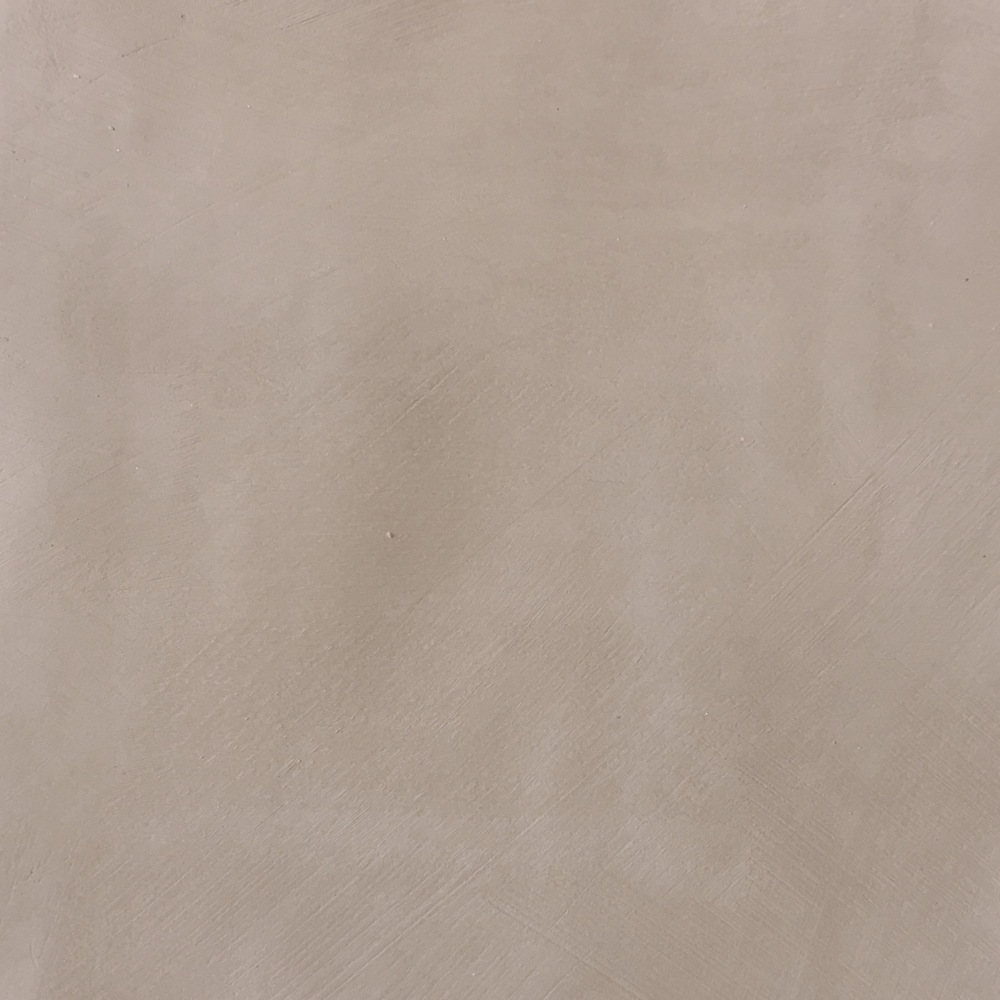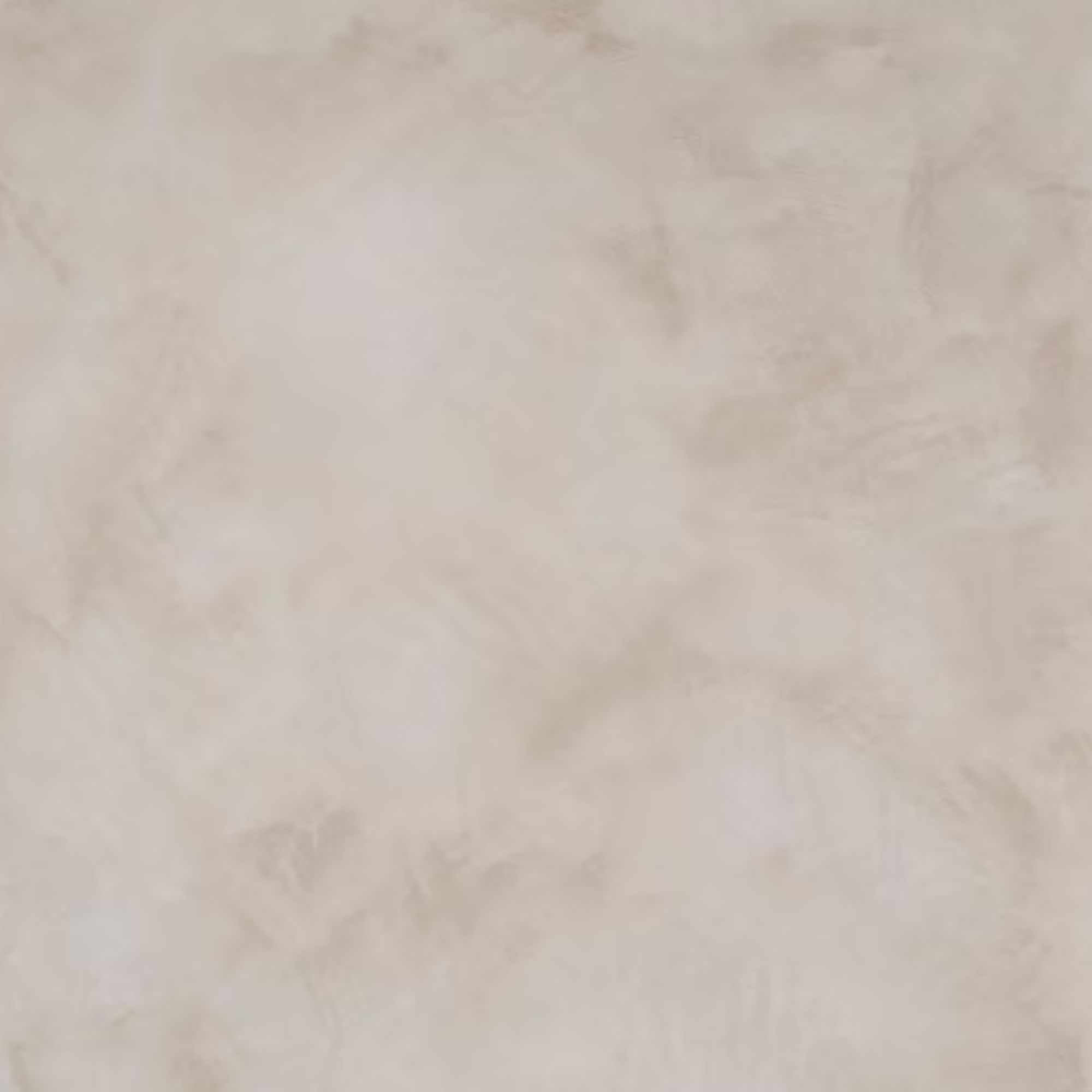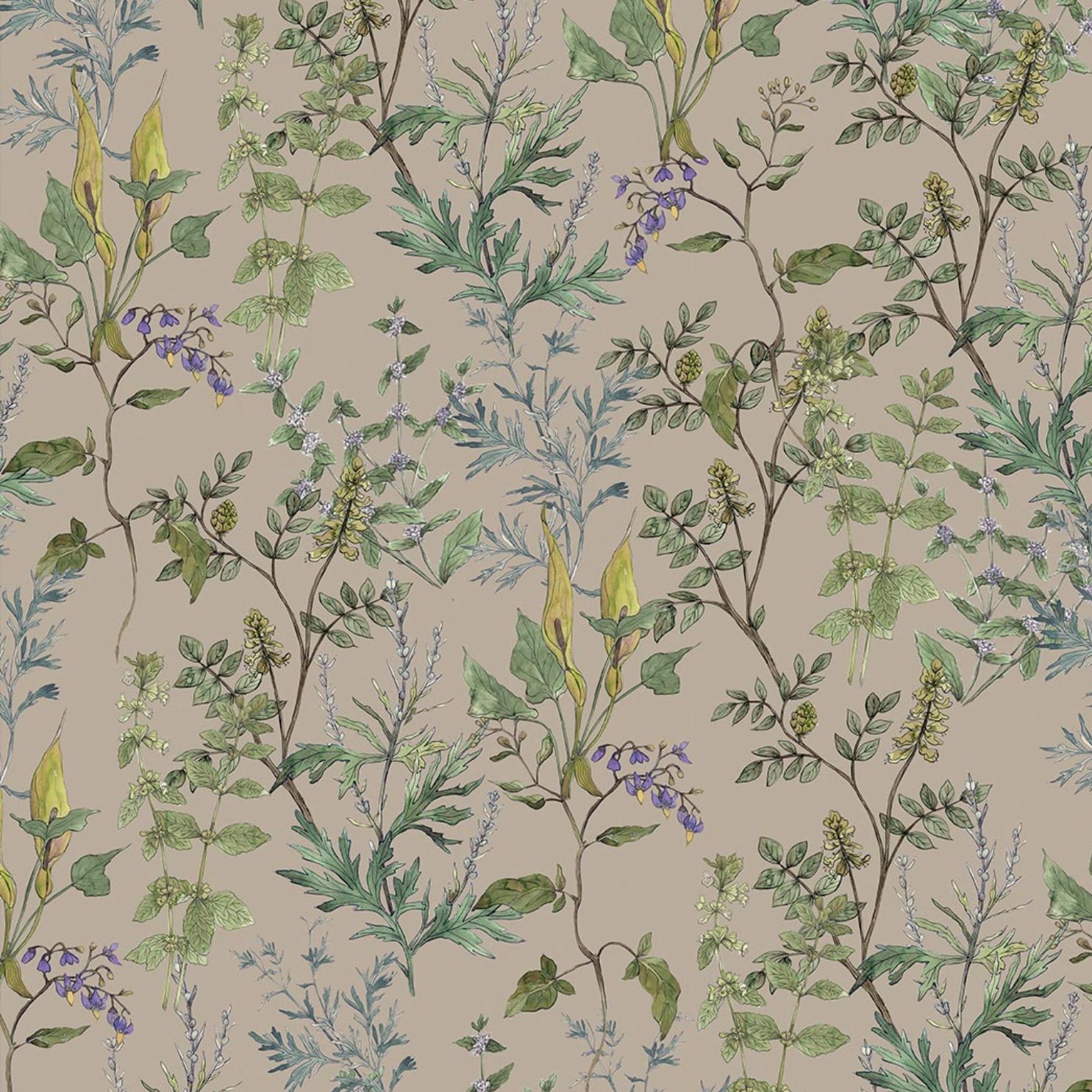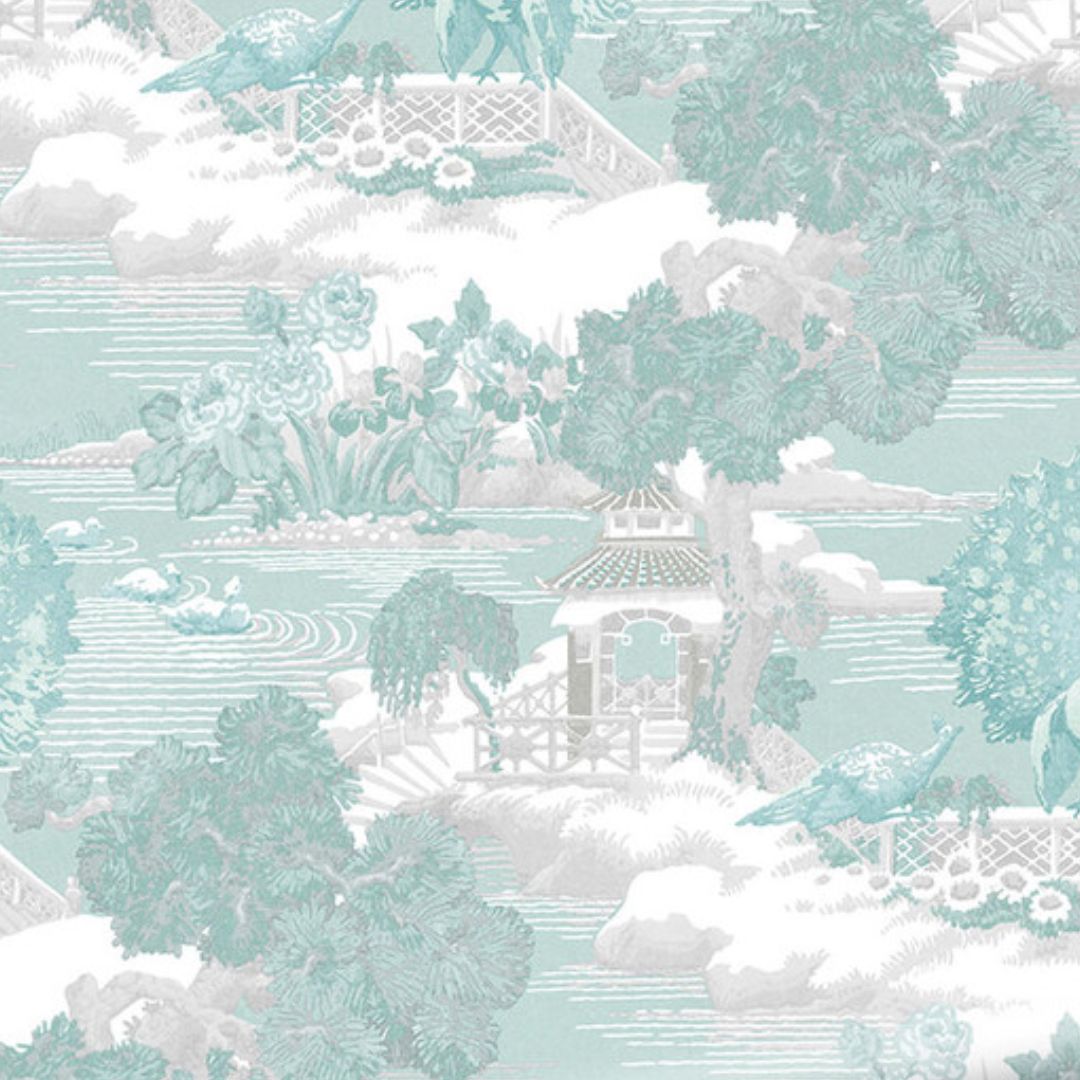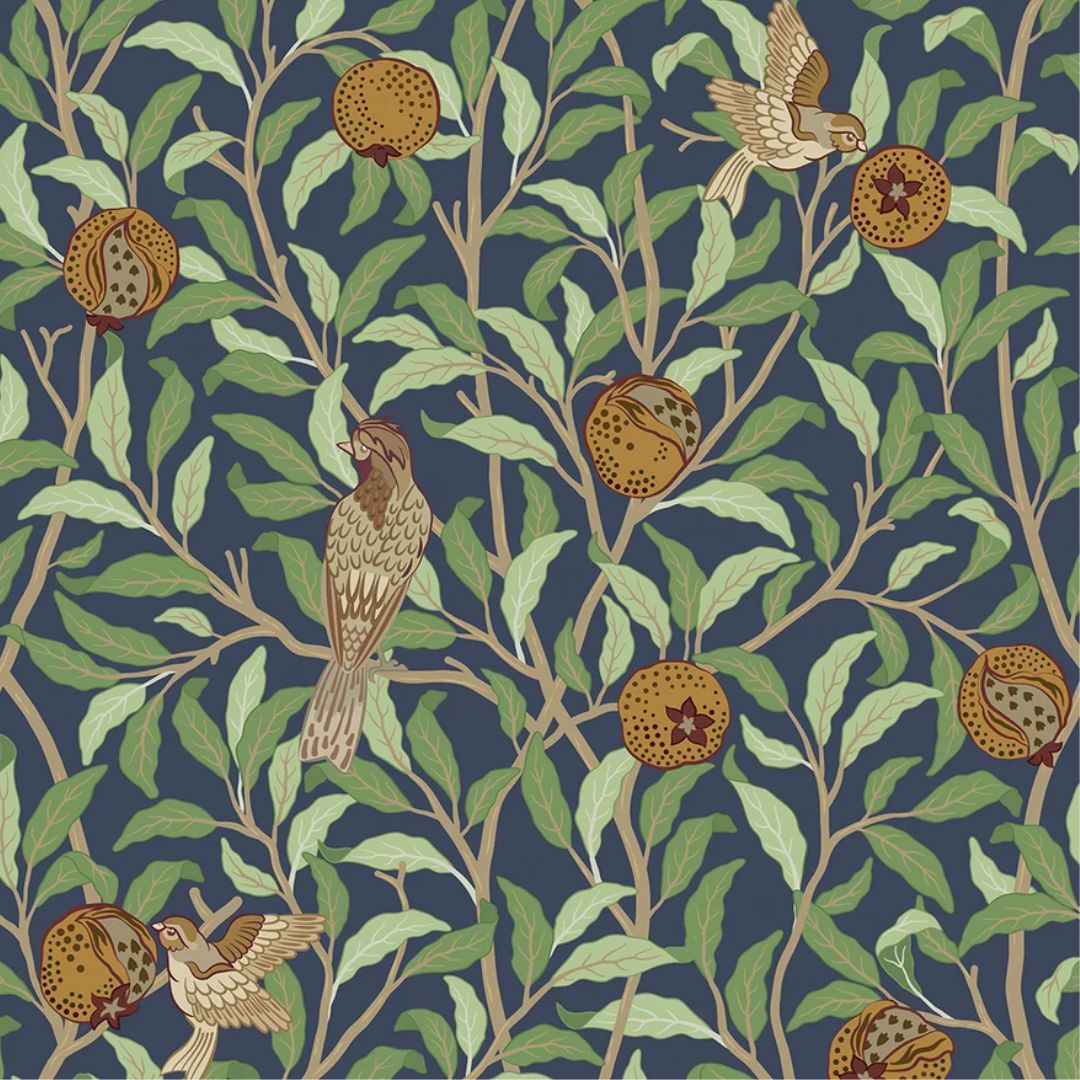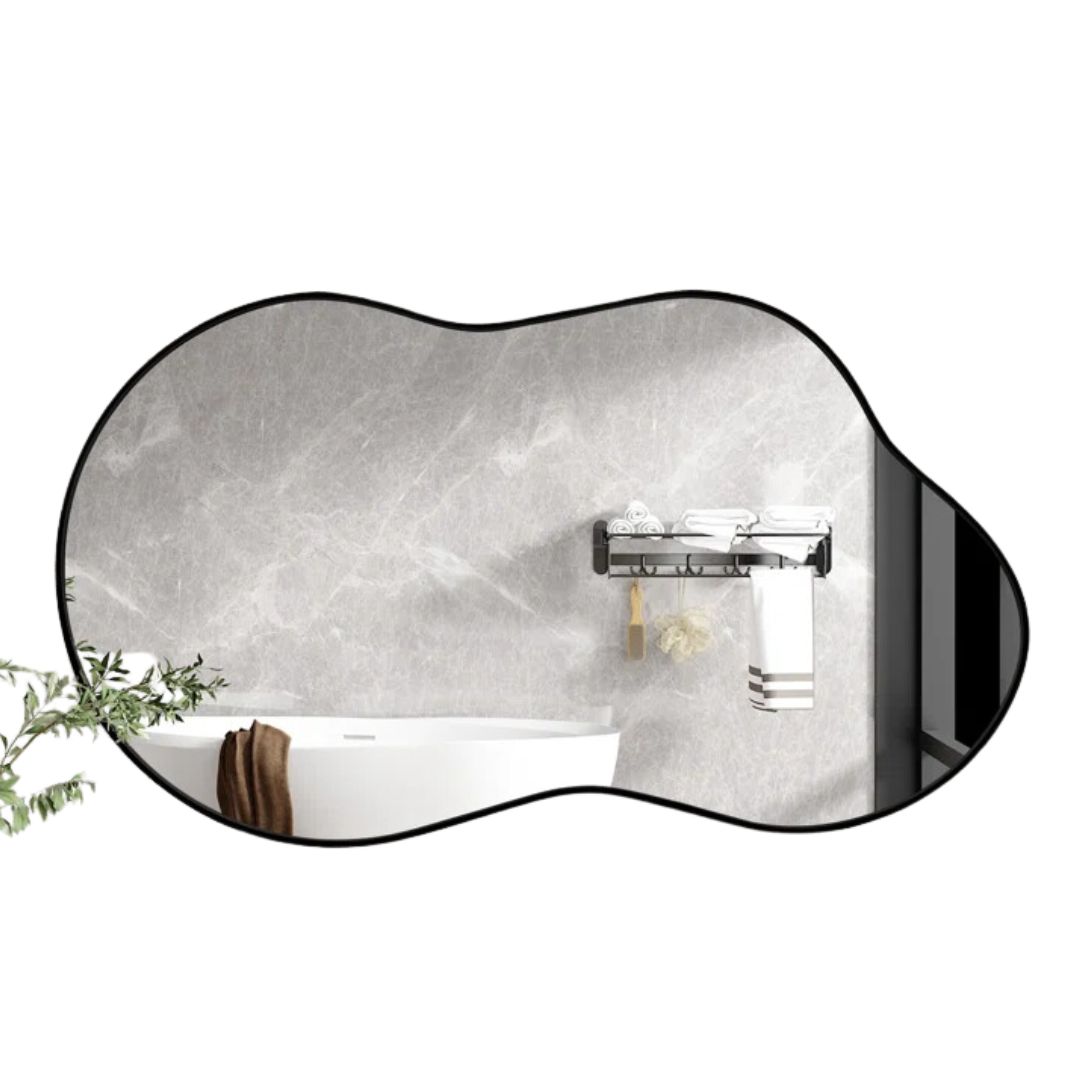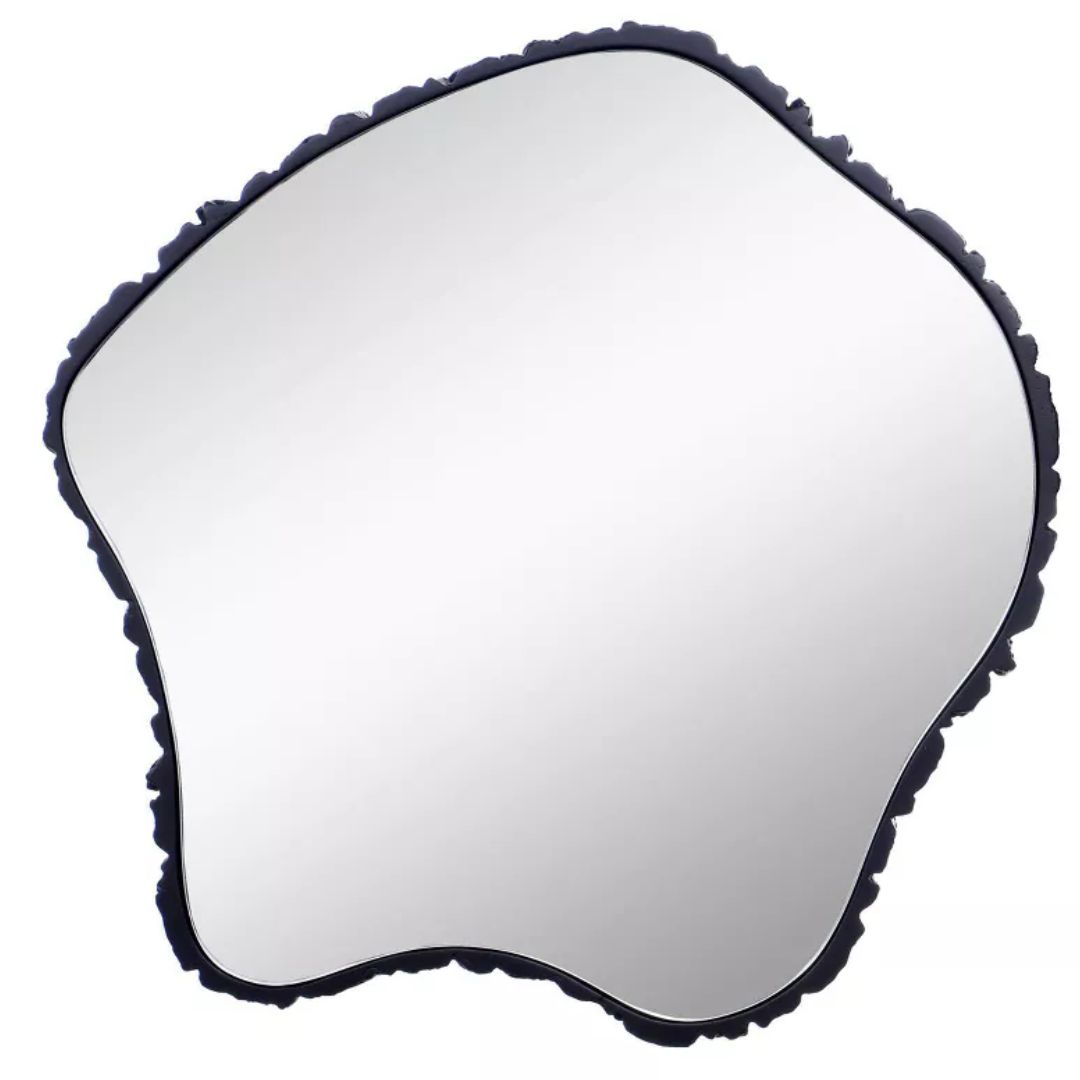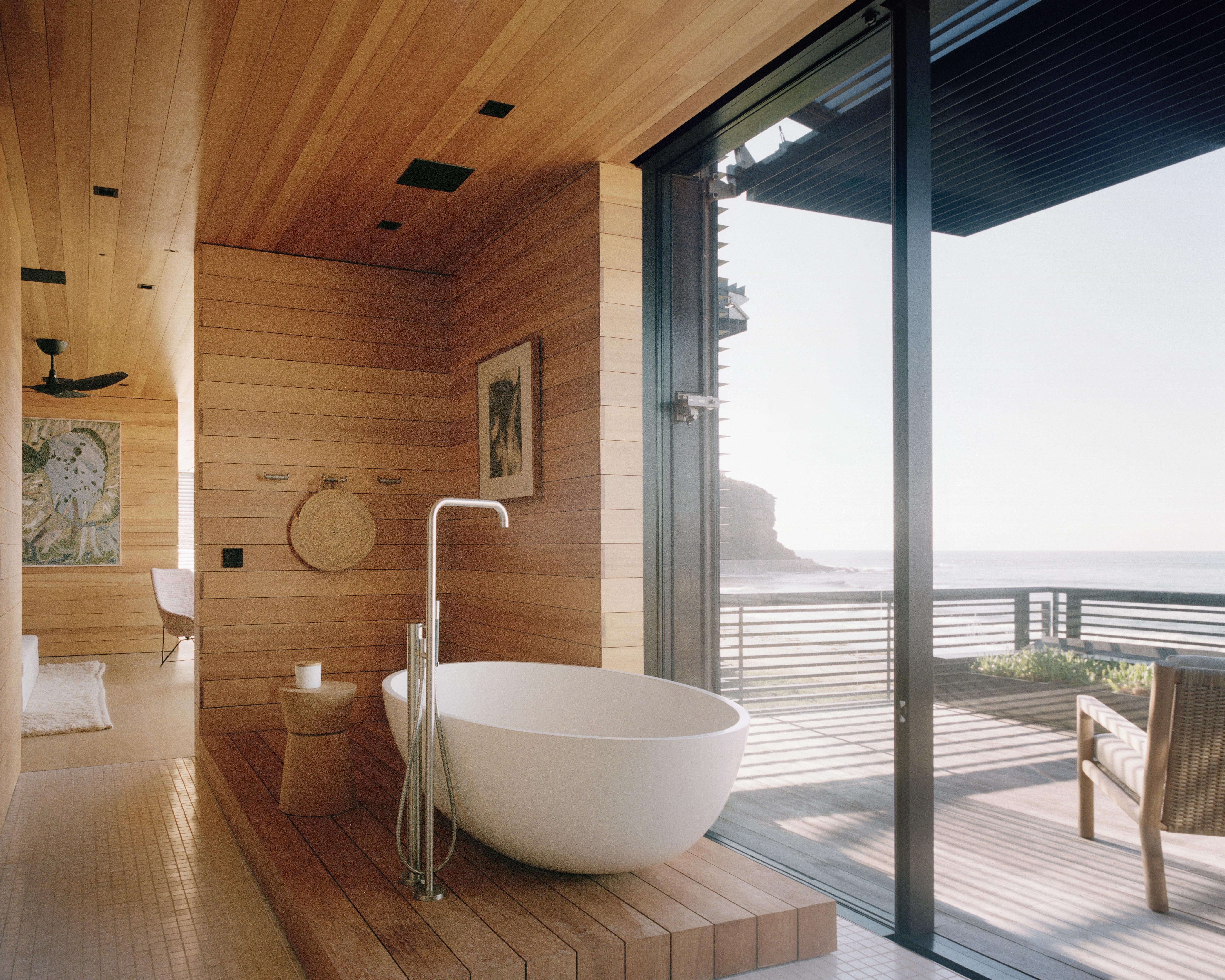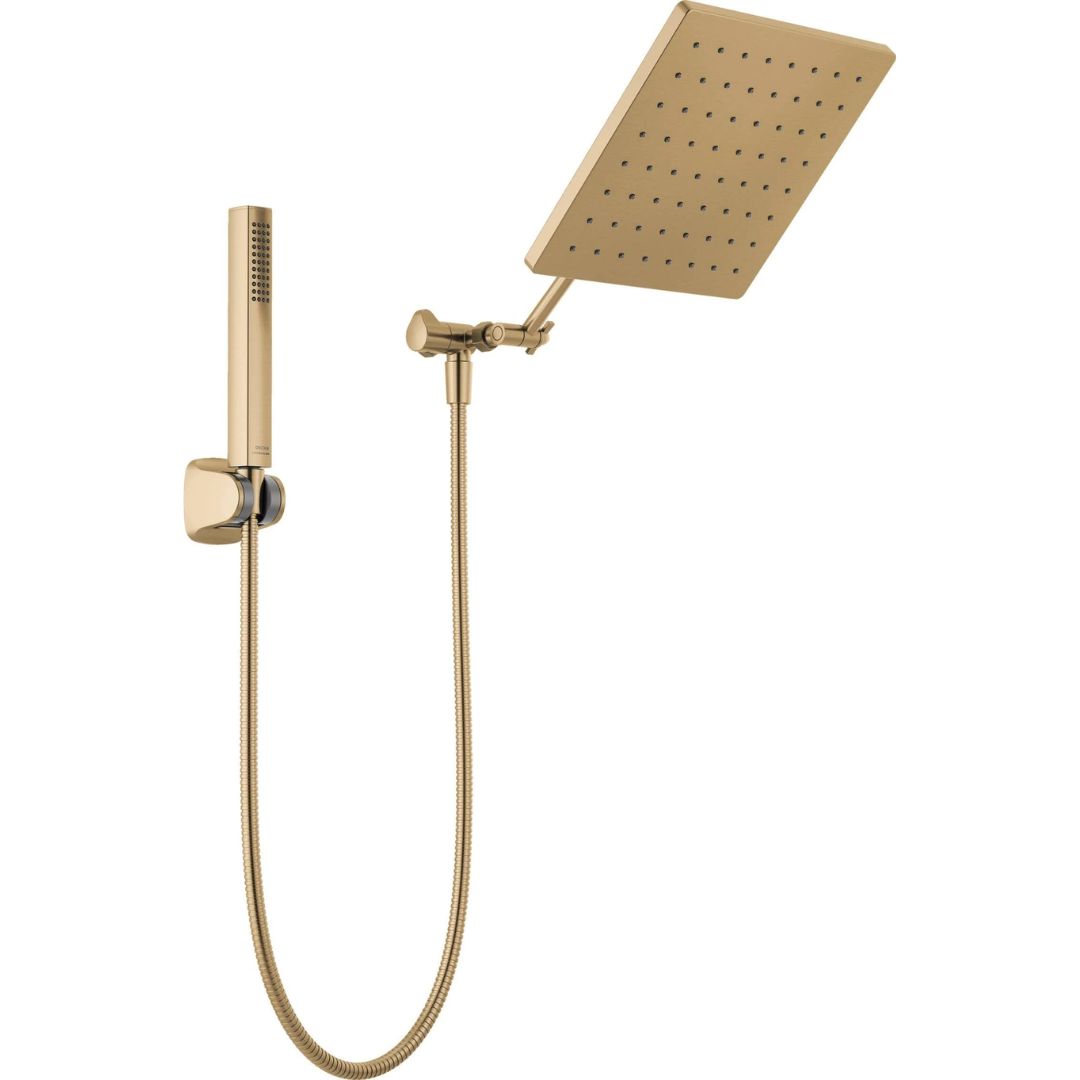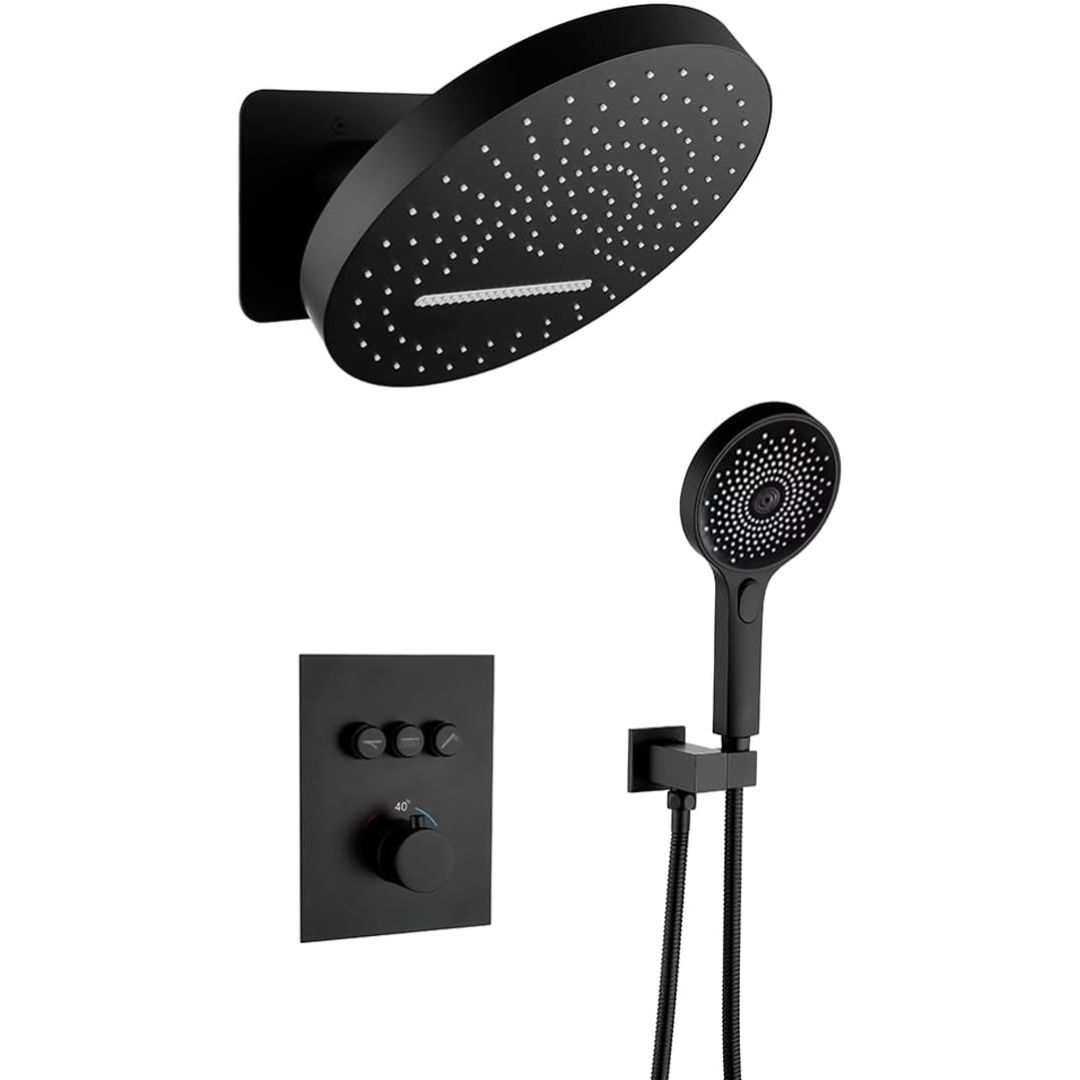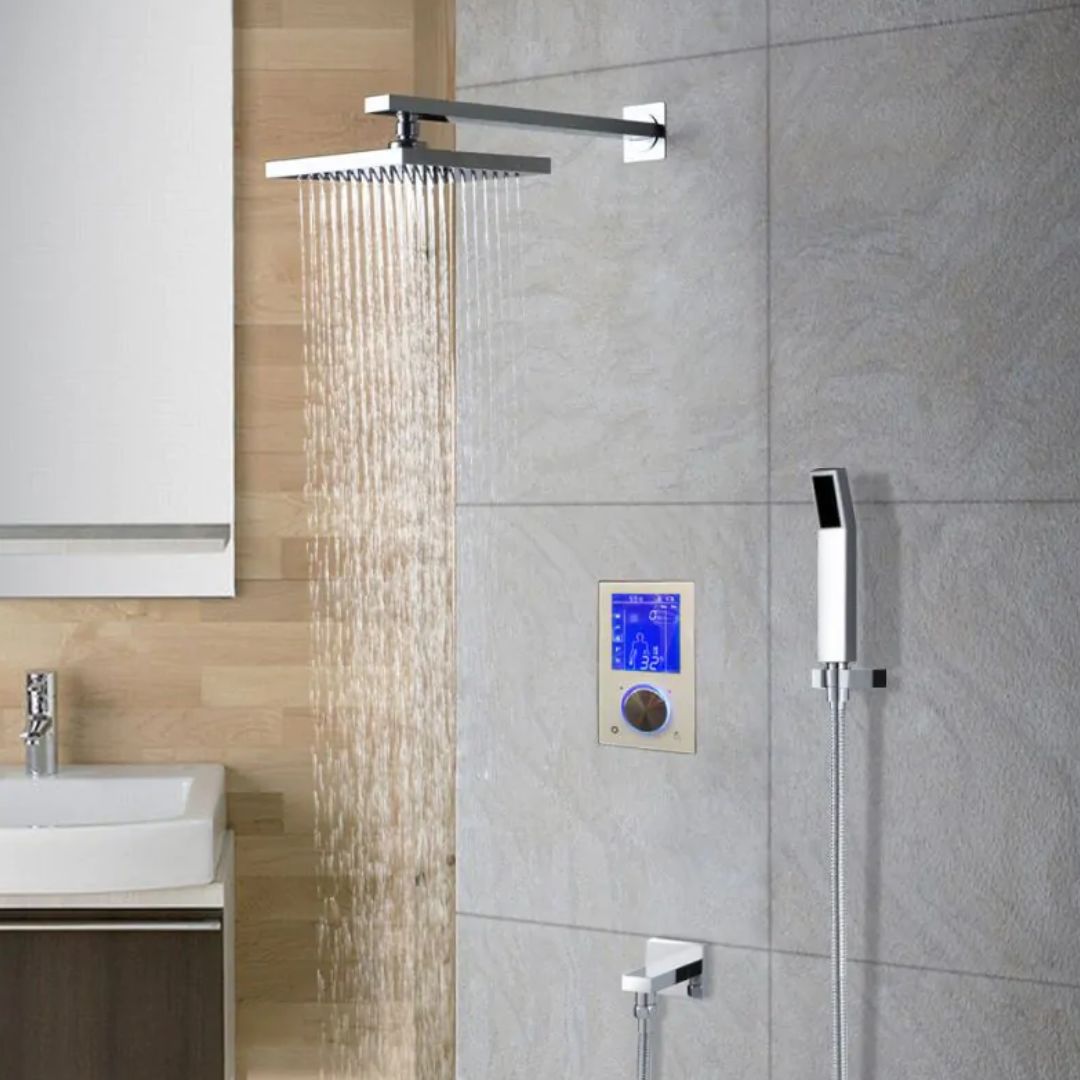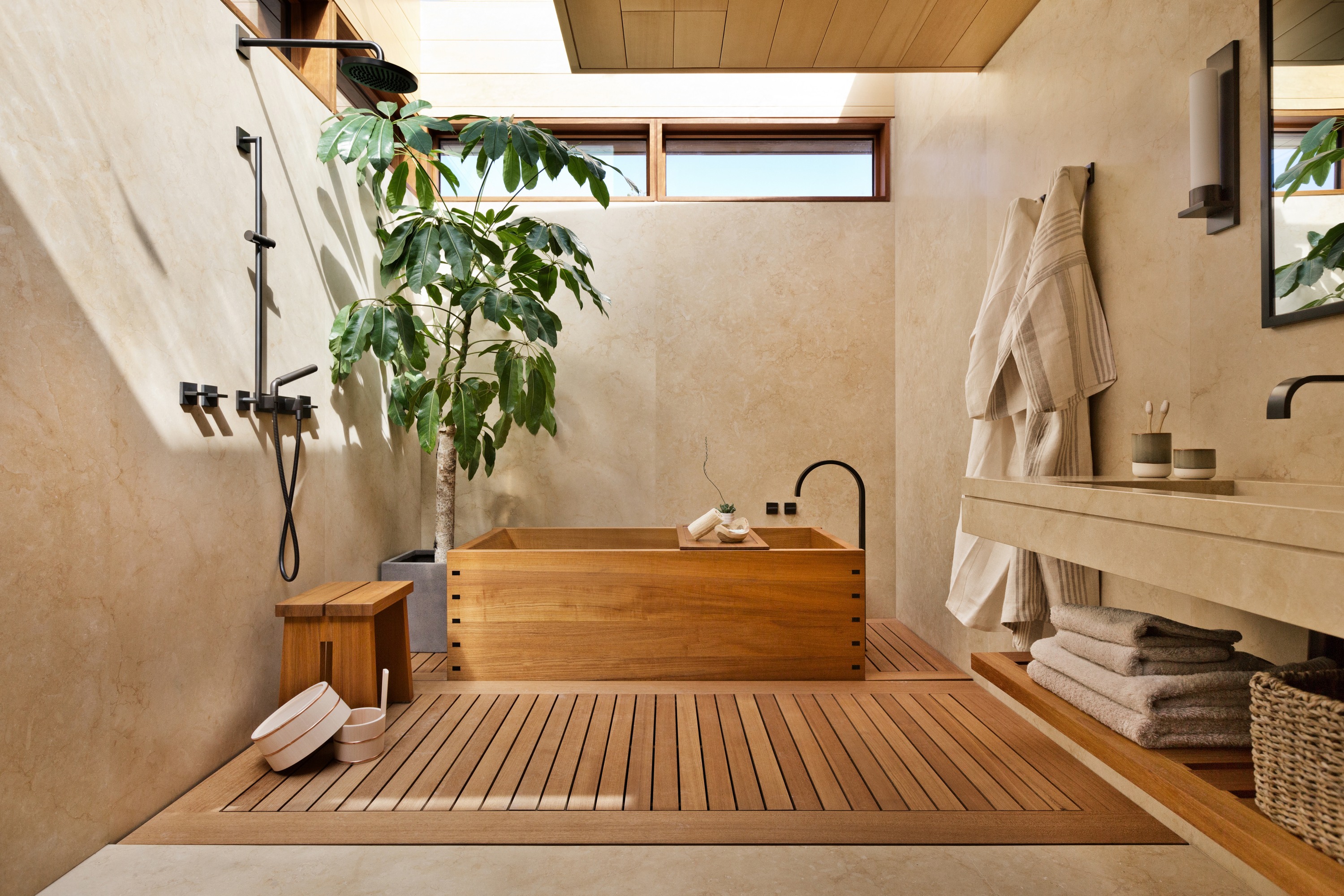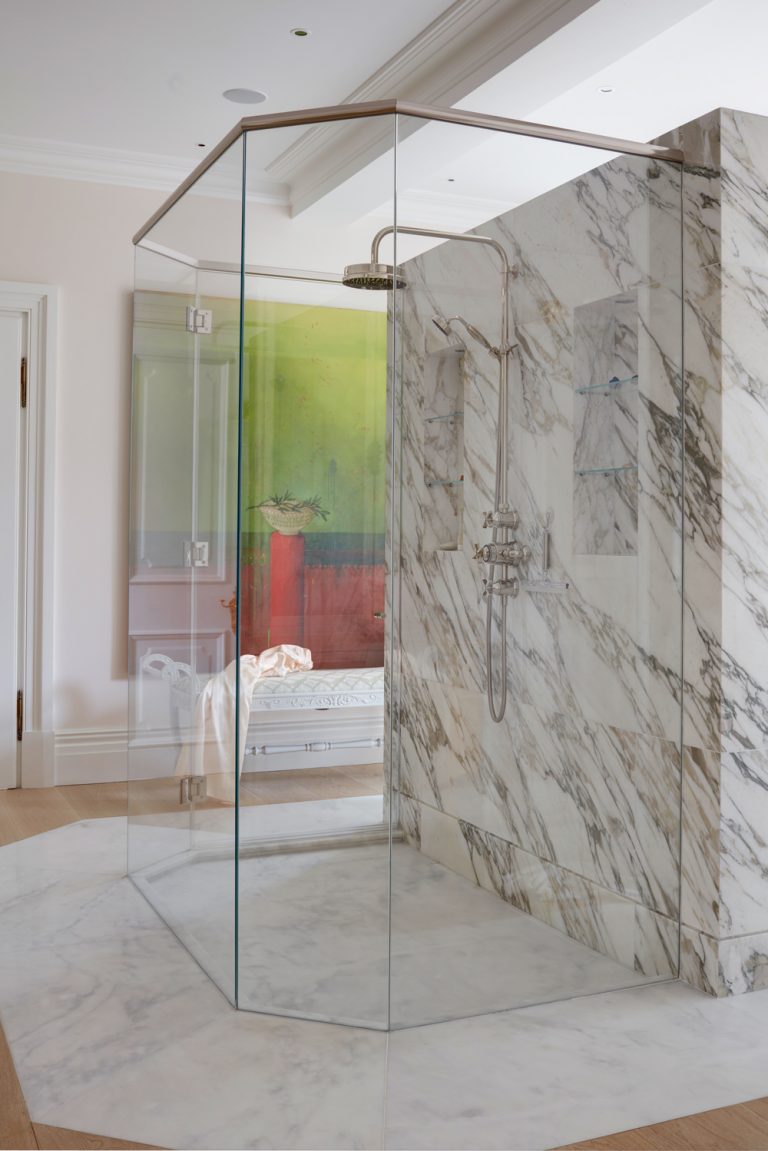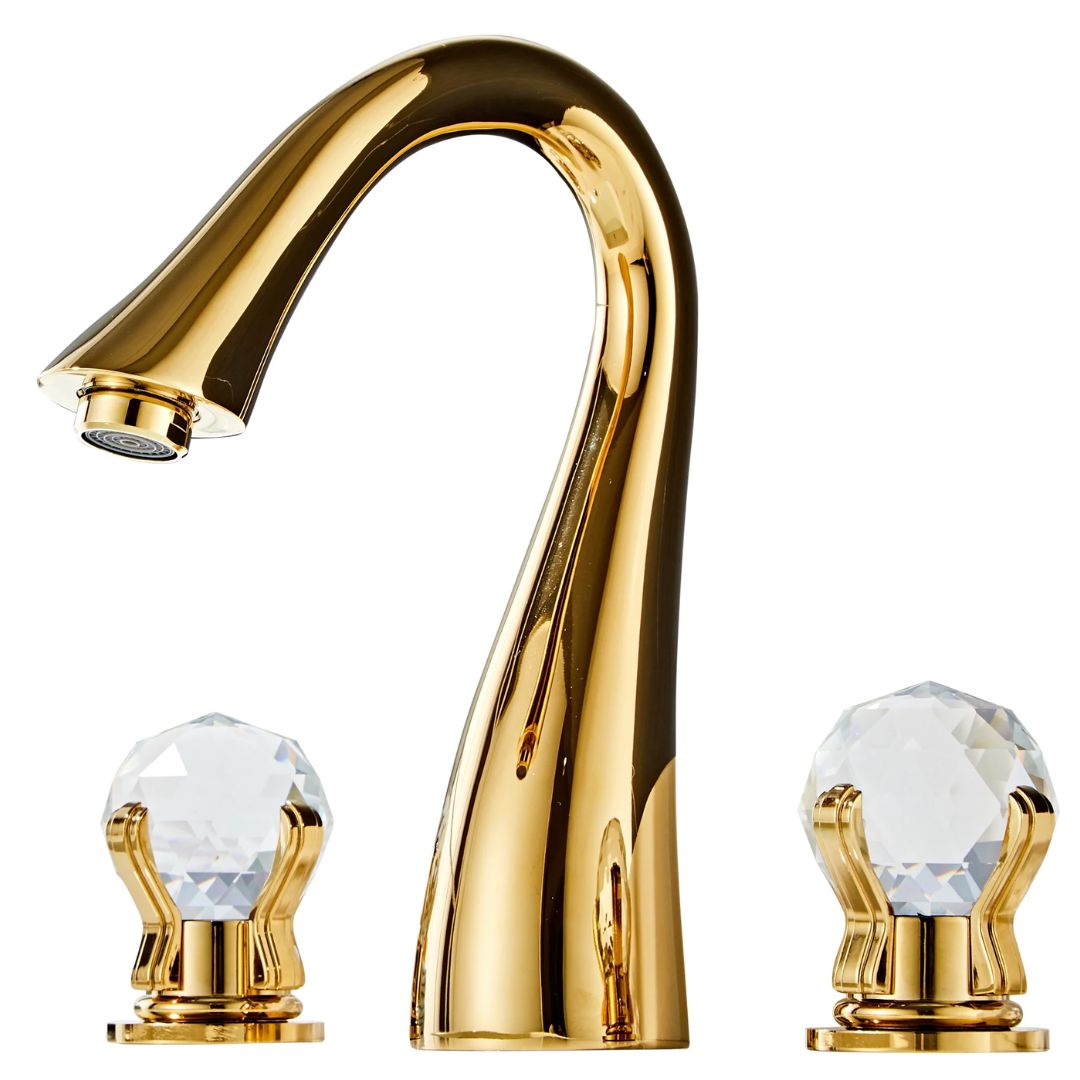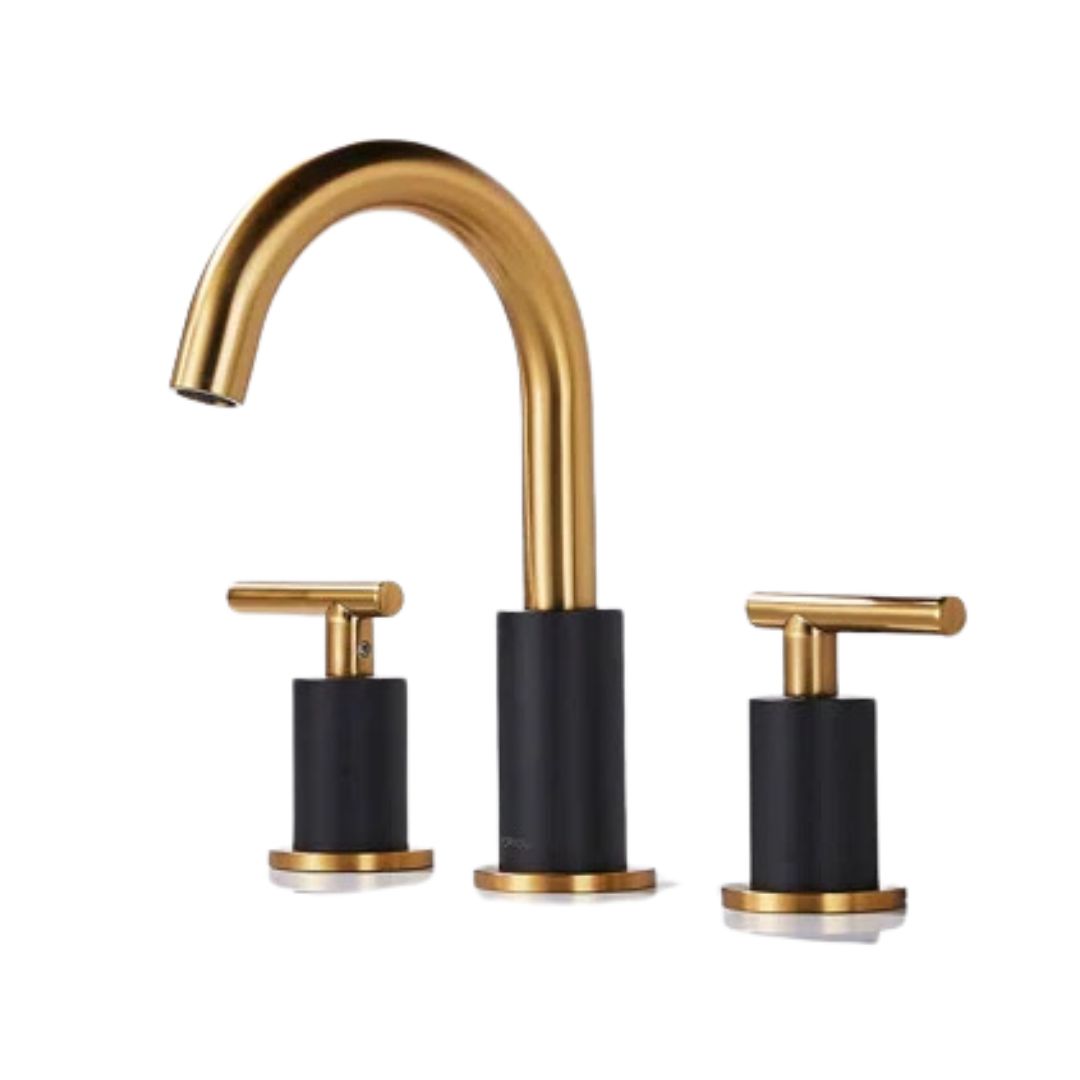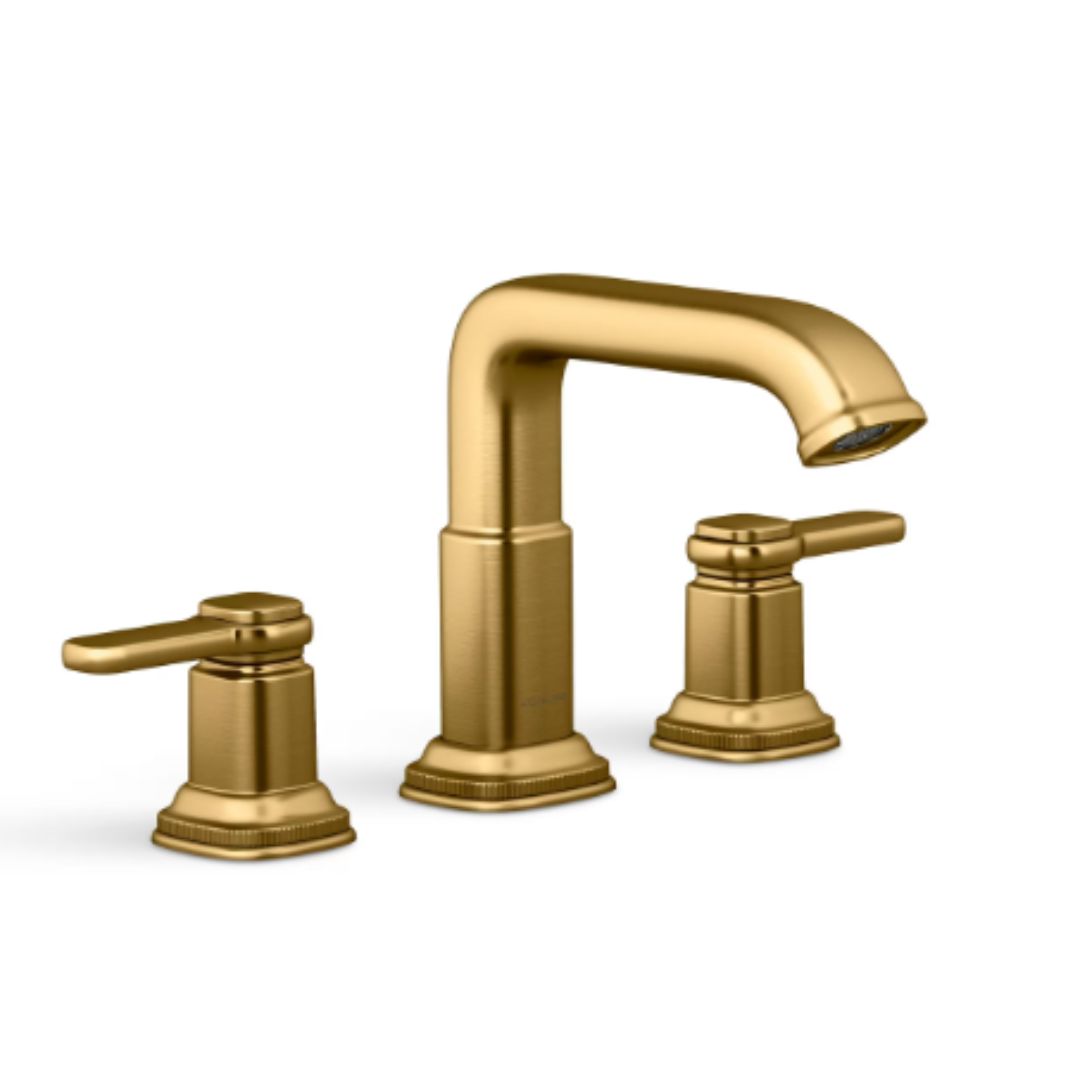Modern Bathroom Ideas — 33 Projects That Will Inspire You With Clever Design Features
From flooring to fixtures, color to tiling, the designers of these contemporary bathrooms have created the most exciting spaces


- 1. Go for unique floor tiles
- 2. Ensure calm with limewash walls
- 3. Choose a stand out basin
- 4. Install a wallpaper
- 5. Create a focal point with clever design features
- 6. Introduce color and pattern with bathroom blinds
- 7. Invest in a unique mirror
- 8. Create hidden storage
- 9. Design a skylight in windowless bathrooms
- 10. Fit storage in a custom vanity
- 11. Add a modern freestanding bathtub
- 12. Choose colorful tiles
- 13. Consider a double vanity
- 14. Go for a spa-like bathroom with a steam shower
- 15. Bring in embellished elements for an elevated feel
- 16. Create a customized marble vanity for a luxe feel
- 17. Go for a built-in bathtub
- 18. Bring in black & white marble tiles
- 19. Choose terrazzo for a dynamic look
- 20. Embrace luxe materials
- 21. Opt for a pendant light fixture
- 22. Factor in clever storage solutions
- 23. Bring in raw industrial style with concrete finishes
- 24. Go for a graphic tile pattern in the shower area
- 25. Incorporate fluted furniture
- 26. Brave a darker scheme
- 27. Add plants
- 28. Hang a modern chandelier for a luxurious touch
- 29. Create a walk-in shower room
- 30. Install a Crittall style shower screen
- 31. Arrange tiles in chevron formation
- 32. Go for a built-in shower seat
- 33. Introduce brass bathroom fittings
Our bathrooms are our home's great escapes; they're rooms where you can spend some much-needed "me time" and soak in a little luxury and quietude. In fact, the modern bathroom is about more than functonality. It's also a space for wellness, relaxation, and rejuvenation. And, this is why its design matters. Every element; be it the lighting, the colors, the textures, and hardware plays a crucial role in creating a specific vibe and mood.
And so, the question arises: how do you bring together all these separate modern bathroom ideas for a space that lives up to its importance in the home. Thankfully, experts have offered us a formula for putting together a perfectly practical, functional, and beautiful washroom. Browse through these handpicked examples that each showcase a unique idea and solution.
1. Go for unique floor tiles

When it comes to adding interest, look to bathroom flooring ideas first. In fact, these can elevate an interior in a flash without overwhelming the space. Take this bathroom by designer Brooke Aitken for instance. The white bathroom scheme is wonderfully punctuated by the black and white tiles that give movement to the room.
"The client came to us with a brief to remodel the three bathrooms of this residence, as part of the final component to a broader renovation project on the estate," she says. "The residence was previously a maternity hospital, turned apartments. To shape spaces with color and pattern, we chose delicately handmade tiles, and the unique textures and geometrical patterning helped link back to the origins of the historical architectural foundation."
In a space like this, you could consider adding subtle pops of gold in hardware, light fixtures, and decor to give a touch of richness.
2. Ensure calm with limewash walls
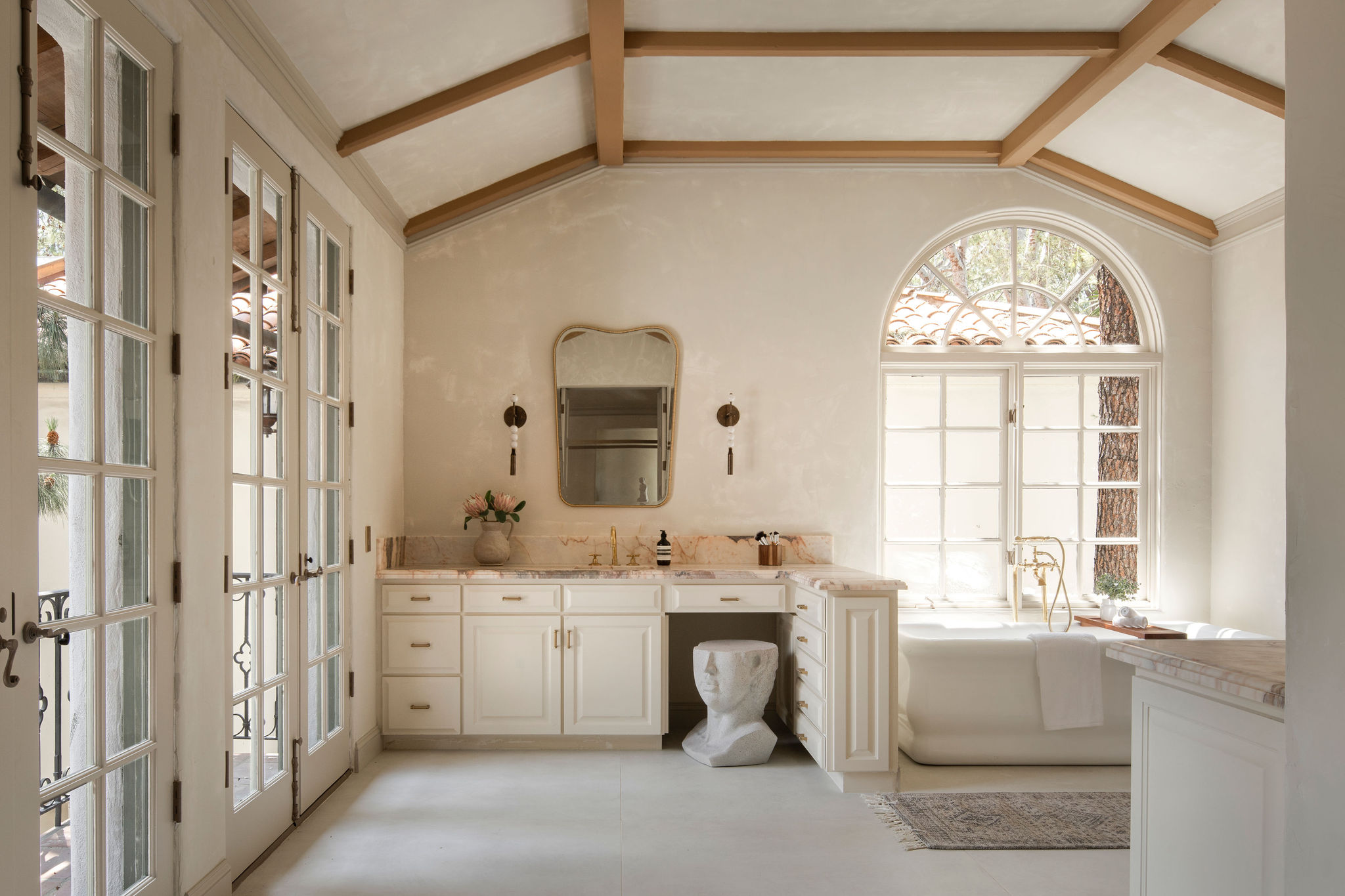
There's beauty in simplicity, and limewash paint is a great example of that. By nature, the material is breathable, eco-friendly, can be easily applied to walls, and it allows for experimentation. Visually, it has a soothing, relaxing appeal and can create a spa bathroom look. In the recent years, this finish has seen a revival in homes of all styles and sizes. In this room, regardless of the size, the limewash walls inject an elevated look and allow the elements of the space — the mirror, furniture, and hardware — to really stand out.
"To design this bathroom, we included a vintage-inspired free-standing tub along with an unlacquered brass floor-mounted tub filler perfectly symmetrical to the arched window overlooking the pool," says Safir Shamsi of Studio Roi.
The Livingetc newsletters are your inside source for what’s shaping interiors now - and what’s next. Discover trend forecasts, smart style ideas, and curated shopping inspiration that brings design to life. Subscribe today and stay ahead of the curve.
3. Choose a stand out basin
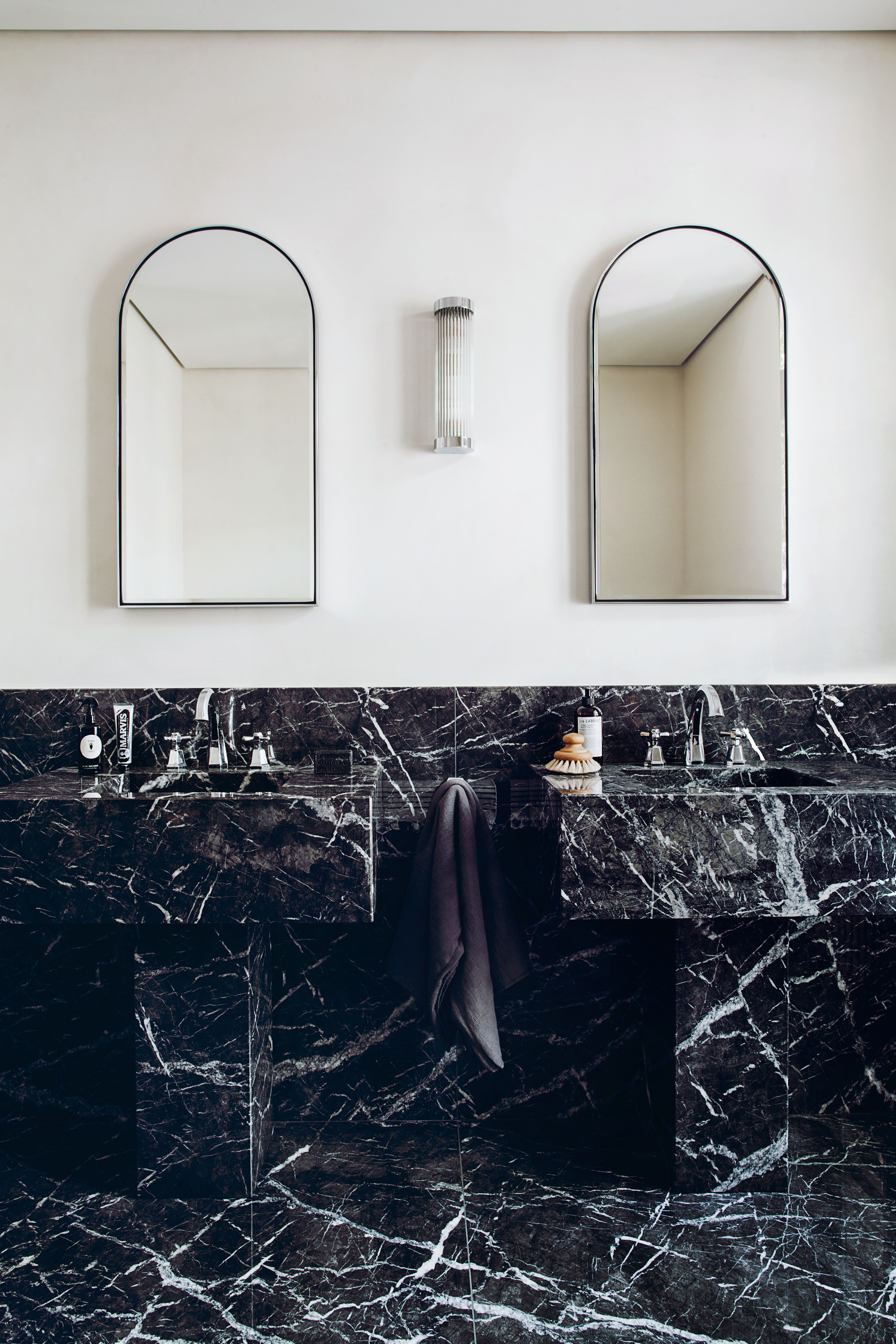
Marble is an interesting material, as it can lean super traditional or super modern. What sets it apart is that each slab of stone looks different due to the variety of veining and coloring; and this gives it a one-of-a-kind look. This material also holds up in a wet environment (just consider that it needs to be sealed often). While it is pretty standard to see marble flooring or backsplashes, think of perhaps a marble sink?
"The marble used in the bathroom is Grigio Carnico," share Baptiste Rischmann and Guillaume Gibert, founders of RMGB. "We wanted to create a classic aesthetic while retaining a contemporary style. We designed the basins with very simple, brutal lines. The entire marble bathroom gives the impression of being sculpted from a block of stone."
4. Install a wallpaper
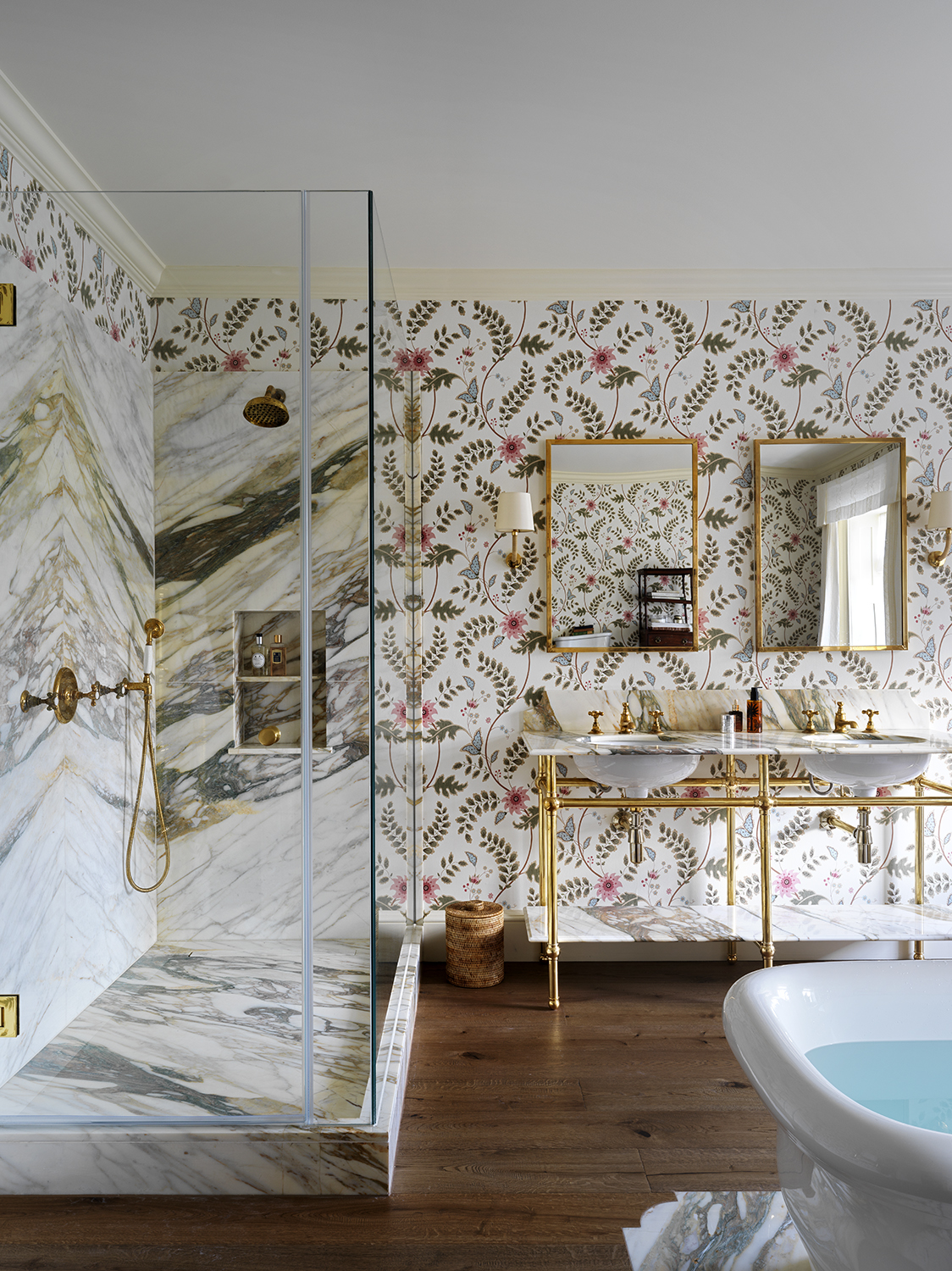
You might ask the question of bathroom wallpaper — is this even practical? Experts say this is one of the most striking modern bathroom ideas because it is so unexpected. As long as you're choosing a vinyl design and are sensible where you put it (only specialist wallcoverings should be used in showers or around basins, for example), it's plenty durable, and can look amazing, as in this home design.
“This home project was filled with color and pattern and so we wanted to extend this into the primary bathroom," say Mary Graham and Nicole Salvesen, founders of Salvesen Graham. "Our wallpaper lends a feminine balance here against the bold marble.”
5. Create a focal point with clever design features

This bathroom wall tile idea is brilliant and attention-grabbing. It is a custom piece by Amit Khanolkar, founder of DIG Architects.
He explains: "At the first look these may look like bulbs but this is actually a design carved in marble. It was created to avoid a typical window opening. The grid of punctures is filled with translucent acrylic to refract the maximum amount of light into the bathing space."
6. Introduce color and pattern with bathroom blinds

Bathroom window treatments apart from offering privacy also add an important layer of style and softness to the room. Consider blinds, curtains, or even painted shutters for your bathroom ideas, and see how they completely transform the interior.
"We suggest either going with a neutral fabric option to blend into your bathroom's hard finish selections or selecting a bold fabric that is a standout piece on its own that coordinates with the bathroom but provides a pop of color as we did here," says Lauren Lerner, owner and principal of Living with Lolo.
7. Invest in a unique mirror
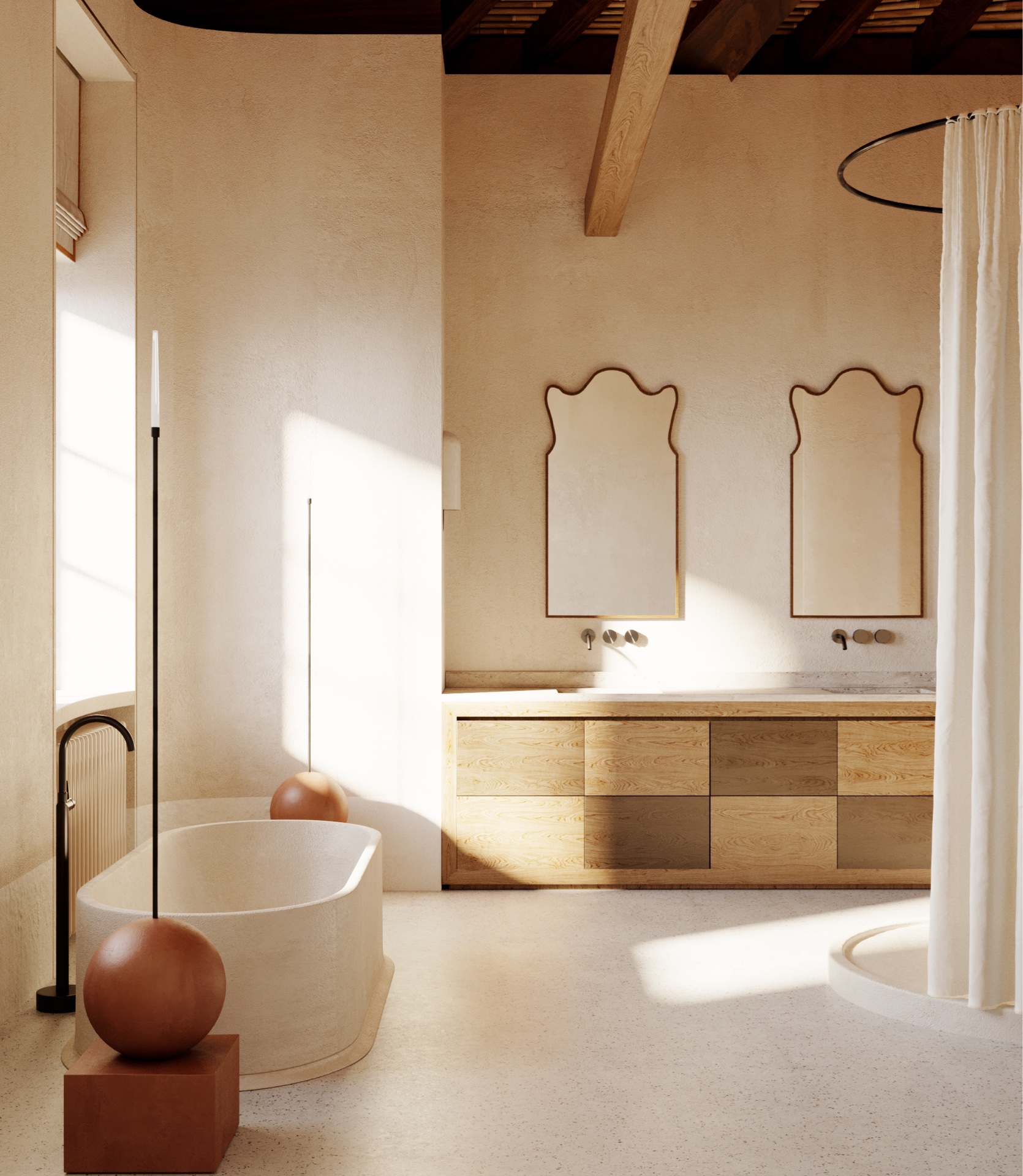
Bathroom mirrors are of course, a big staple for the room but why go for a regular design when there are plenty of unique ones that can add personality to the space? Irregular-shaped mirrors break the symmetry of the room, and give the design movement. If you have a large enough bathroom, you could even consider a standing mirror that gives more whimsy to the interior.
"The washbasin is made from local stone, which we have specially treated and coated with a protective matt varnish," says Ksenia Breivo, founder of Studio Breivo. "The project is inspired by the local landscape, repeated in the mirror design."
8. Create hidden storage

While bathrooms are becoming more like living spaces, they're not the places you want clutter to accumulate, so modern bathroom ideas are trending away from open storage.
"We are getting rid of most of our open shelving spaces in effort to “hide” things," says Kristen Pena, founder of K Interiors. "The more closed storage the better."
This idea from Berlin-based Takk Studio is a great example of how hidden bathroom storage can be introduced. Here, storage for toilet paper is integrated into the marble slab of the bathroom, almost seamlessly hidden from view when the cabinet is closed.
9. Design a skylight in windowless bathrooms
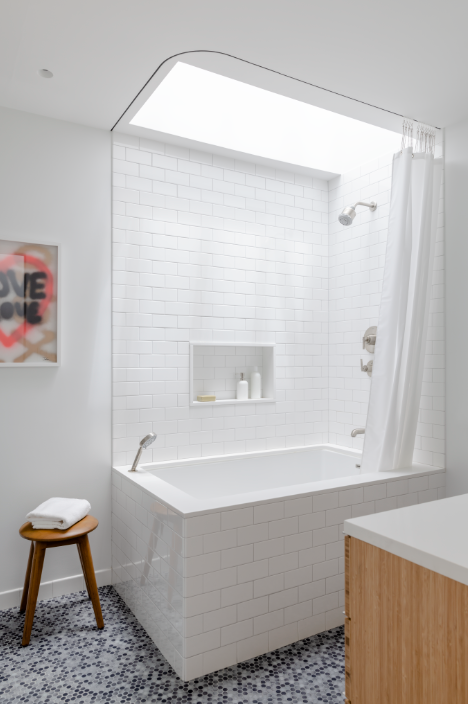
A great way to increase natural light in a small bathroom is with a skylight installed in the ceiling. If you have the budget and want to add a more timeless style to the room, this is the way to go. Many of these are mechanically operated which means you can control the light filtering in from these openings.
"A skylight was the obvious answer for a windowless bathroom in the middle of a brownstone’s top floor," says Jeffrey Sherman, co-founder of DELSON OR SHERMAN ARCHITECTS PC. "Our innovation was to size and place it to align with the tub directly below. This created a shower of daylight to complement the shower of water. For the shower curtain, we recessed a hospital track flush with the sheetrock ceiling and hung the curtain on beaded chains."
10. Fit storage in a custom vanity
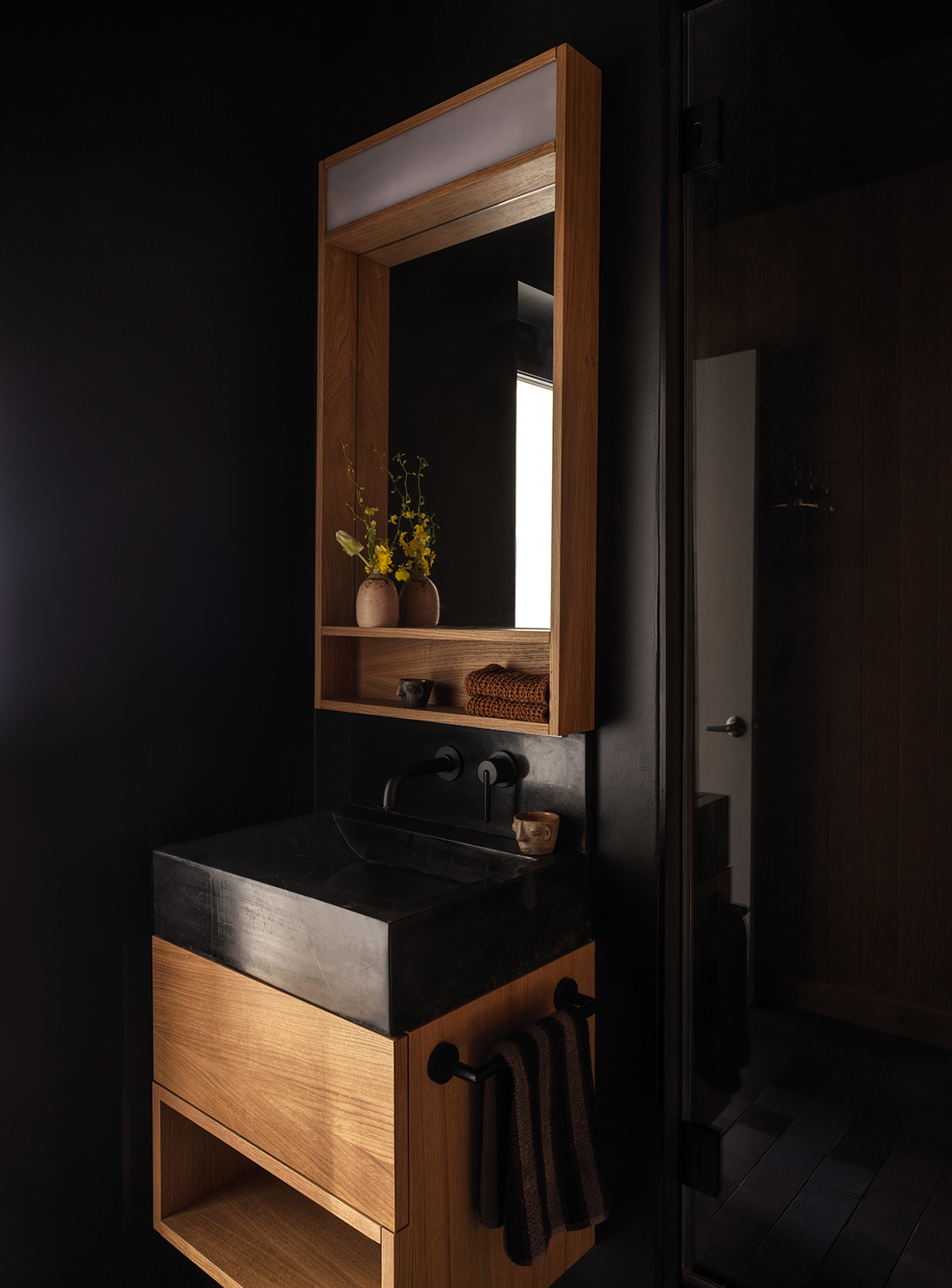
Have a small space and want to fit in a bathroom vanity without making the room feel chaotic? A custom design could do the job.
"Our custom vanity, part of the Flatiron Loft project, is made of oak wood and black soapstone, shaped as a trough sink, together with the custom mirror and vanity lighting fixture above it," say Noam Dvir and Daniel Rauchwerger, founder of BoND. "The design is based on simple rectilinear geometry and incorporates both hidden and exposed storage. While there are thousands of vanity products on the market, it is harder to find higher-end products for smaller spaces. In this case, the vanity fits into a guest bathroom with limited space. It's pretty petite, with only 20" in width."
11. Add a modern freestanding bathtub
One of the greatest modern bathroom design ideas is the presence of a beautiful, freestanding bathtub. Take this wood-dominated space for example.
"This 9,400 San Francisco family home in the sand dunes of Bilgola Beach is organized into transparent and opaque zones," says Tom Kundig, principal at Olson Kundig. "The private spaces of the home stretch to the north and south of the site and are framed in board-formed concrete that blends with the sand. Spanning between these two solid volumes are the floor-to-ceiling glazed windows."
12. Choose colorful tiles

Make the bathroom floor tiles the hero of the room's design scheme. This is an interesting way to add color to a room, in a more subtle manner rather than painting entire walls a singular hue. Tiles add character to a space and give it the needed dimension.
"The material of the flooring are Mutina tiles and Neon Mosaic," say Kuan-Huan Liu and Chun-Ta Tsao, founders of KC Design Studio. "Geometric elements and pink are used to form the space, while different materials and details are added to balance purity and style as well."
13. Consider a double vanity
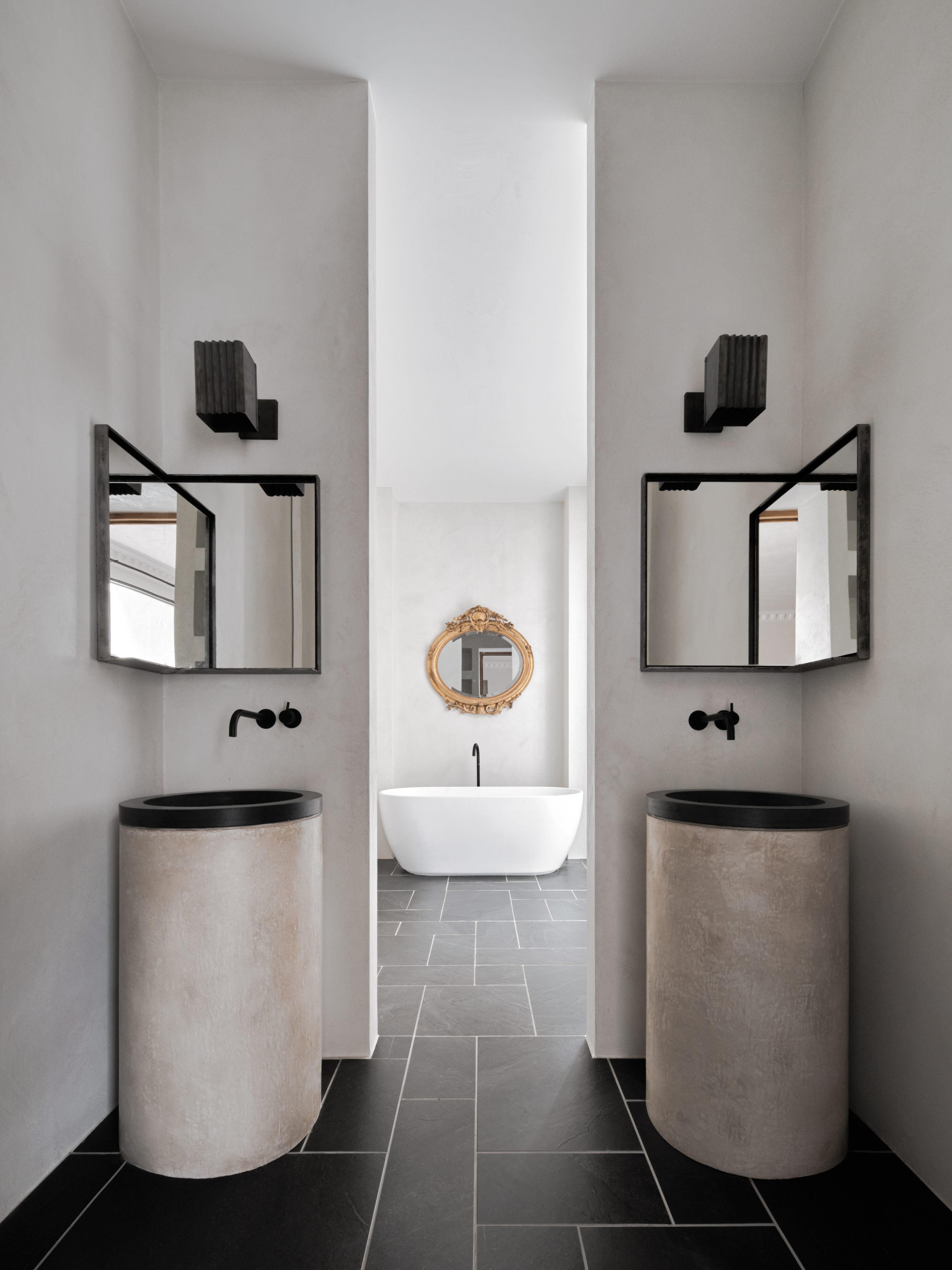
All mornings and nights are bookended by standing at the bathroom sink, so this area deserves to be refreshing and inviting. If you have the luxury of space, there's nothing more fitting of modern bathroom designs than having two bathroom vanities – the perfect balance between style and practicality, and currently, a big modern bathroom trend.
Choose earthy, tactile materials, and go for similar yet statement-making mirror designs so each vanity looks as desirable as the other. "This bathroom's design was all about adding layers and paring back at the same time to create simplicity and a sense of harmony," says Jin Chen, founder of Ecru Studio.
14. Go for a spa-like bathroom with a steam shower
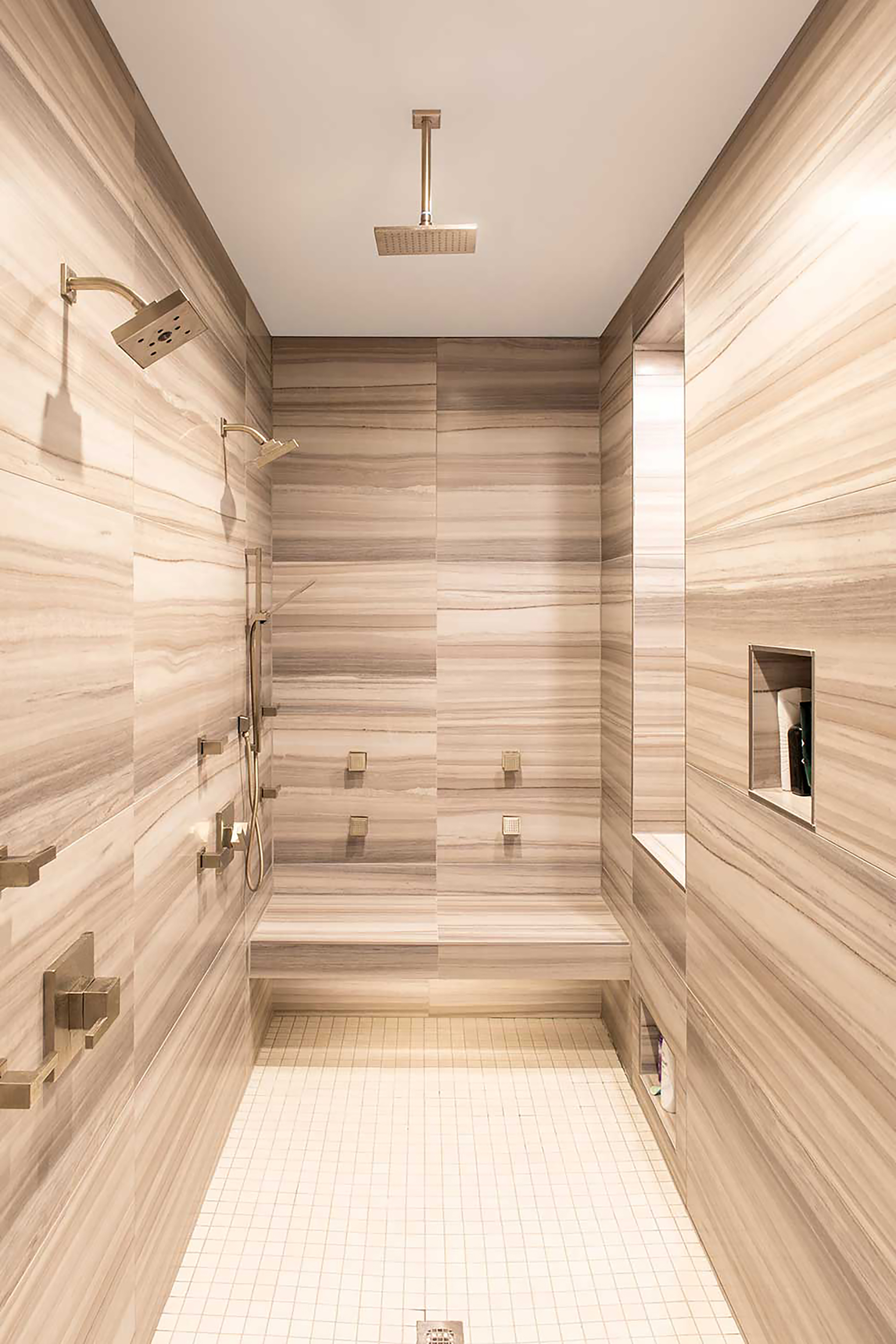
Amongst the types of showers, steam showers are becoming a beloved bathroom idea, and rightly so. They don't require fire pits, tarps, or natural underground heat. Just a touch of a button and you're good to go.
"The steam shower was designed with two in mind," says Jacquelyn Lindsey, founder of JL Design. "This is a spacious shower with enough area for two people to enjoy together."
A great big-to-small small bathroom shower idea is one equipped with a sloped ceiling, adequate lighting, and a showerhead that can immediately cool you off.
15. Bring in embellished elements for an elevated feel
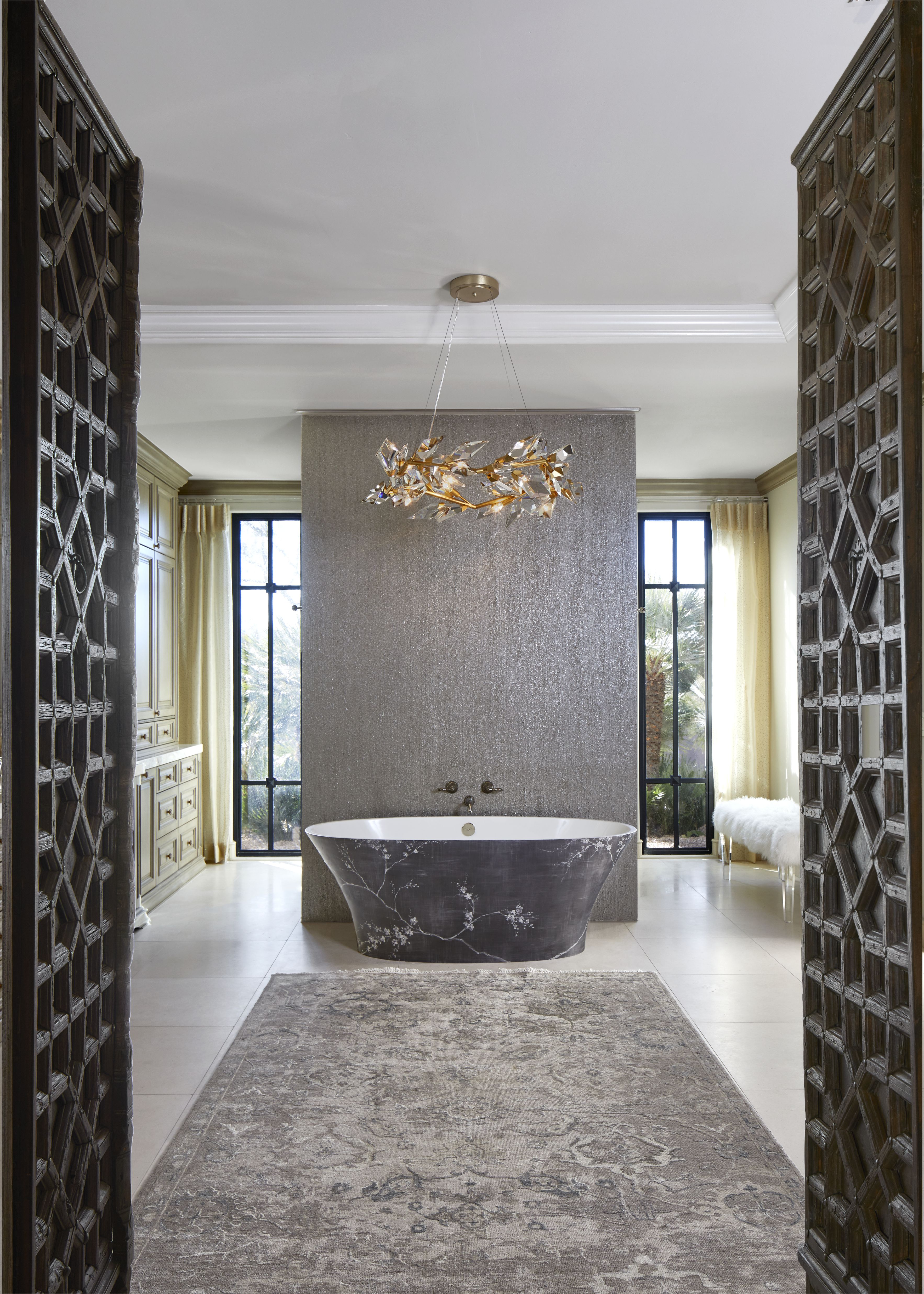
If you're wondering how to remodel a bathroom to make it look more luxe and relaxing, a good element to add is hand-painted elements and small details that go a long way in adding tactility to the space. A rug, a brass element, crystals etc while are usually a staple of transitional bathrooms are now seen in high-end, modern spaces as well.
"We had the Victoria and Albert tub hand-painted, along with the focal wall which is hand embellished with a warm silver metallic mica so it shimmers when you are in the space," says Amy Klosterman, founder of AB Design Elements. "The cabinet door style, the rug and the formal sheer drapery panels are a nod to a transitional or clean traditional style."
16. Create a customized marble vanity for a luxe feel

If you want a bathroom that is bang on trend, a splash of marble is the way to go. Whether you choose marble bathroom flooring, walls, or even vanity, its beautiful, veined, and light finish will complement the otherwise muted sanitaryware, and elevate the space from mundane to luxurious.
Sure, marble is not a cheap material, but even a touch of it can do all the work. If you have a generous-sized bathroom, choose a large basin with wall-mounted taps. Want to add more interest and layering? Natural materials are always beautiful and combined with the sleek look of marble, look like a treat. Consider adding a rattan-framed mirror or a jute rug in the mix.
"For our Gallery House Project, we especially custom cut Guatemala Verde marble to create this vanity area," says Noa Santos, founder of NAINOA Architecture and Interiors.
17. Go for a built-in bathtub

While freestanding models have been stealing the limelight for a while, when it comes to a feeling of pure bliss and a long soak, nothing compares to a built-in bathtub, that has a lovely drop-in feel to it. Built-in tubs are comparatively more practical, as they maximize space, provide a ledge for storing toiletries, and are generally easier to clean.
Plus, inset bathtubs are available in several designs as well; and you can paint a bathtub to give it a personalized touch. If you're planning on designing one in your bathroom, make sure you position it away from the more frequently traveled path from the shower to vanity. Give it its own space and corner, and create a relaxing, exclusive spot.
"I think the definition of a built-in bathtub may vary around the world, but my definition is: an under-mount bathtub with a stone or tile surrounded by at least one wall," says Victoria Holly, principal and founder of Victoria Holly Interiors. "And I love this look. It provides a clean and seamless design that’s well-integrated into the layout of the bathroom. It also offers a solution to a space that either is too small or too big for a standard-sized bathroom, as you can sort of 'fake out' the true size of the bathtub by wrapping with stone or tile. You can create such a beautiful and luxurious look."
18. Bring in black & white marble tiles

If your budget allows you, a marble floor can contribute to modern bathroom designs, as it is a long-lasting solution to a bathroom interior design upheaval. Stone flooring is an option that will always look chic and reinforce the idea that your bathroom is a place dedicated to pampering and sanctuary.
This example is Kemptown House, designed by Lolita Colensa Designs. "It's all about luxury and luxurious stone," says Lolita. "These hardwearing black and white marble tiles were chosen for their perfect keeping with the period of the listed house and fun. They add eye-catching geometric patterns and unbeatable drama. Bathrooms look more glamorous and inviting with this type of flooring."
19. Choose terrazzo for a dynamic look
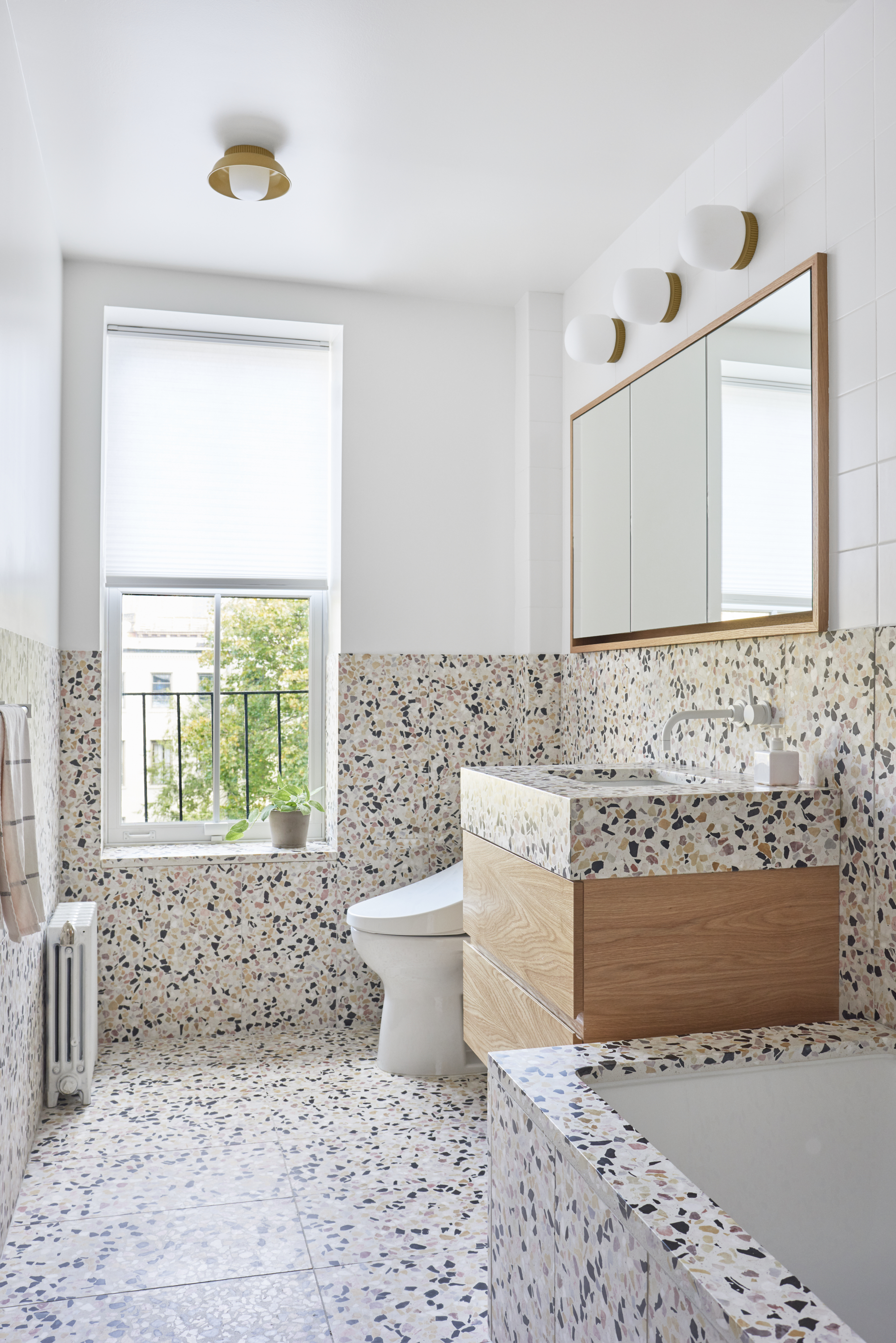
A terrazzo scheme is a great way to add some effervescent energy to your bathroom, and the colors of the tiles give a great base to inform the overall color palette. Go for terrazzo flooring, vanity, bathtub, or an entirely-terrazzo bathroom. This material comes in many forms, but the main types of authentic terrazzo are cement- or resin-based.
To draw focus to terrazzo, choose all the other fittings in neutral tones. Want to give the bathroom an even more modern, eye-catching feel? Choose the largest possible aggregates as the primary marbles.
"Terrazzo is playful, durable, versatile, and offers a break in more traditional-style materials such as ceramic or marble,' says Victoria. "Terrazzo is a composition of various broken-up pieces of material: marble, quartz, and glass. So it works really well with other materials when mixed in a bathroom."
20. Embrace luxe materials

If you want your modern bathroom to be a sumptuous and luxurious space, a touch of gold can go a long way. This gold statement mirror brings opulence to this small bathroom layout and adds a focal point to the room.
"I call this my jewel box," says Barette Widell, founder of Widell + Boschetti. "The colors of Artistic Tile's Rainbow Onyx stone vanity always brings a smile to my face. I wanted to create a room that felt playful yet dressy all at the same time and the combination brings a modern touch to a timeless bathroom."
21. Opt for a pendant light fixture

A pendant is an interesting addition to a modern bathroom. Adding a statement bathroom lighting adds a touch of glamour and luxury.
"Before choosing a pendant light for your bathroom, I think the purpose of it should be clearly defined; whether it is for aesthetics or to illuminate the space or to highlight a corner or create an ambient mood in the bathroom," advises Natasha Aggarwal, founder and principal designer of NACL Studio.
22. Factor in clever storage solutions
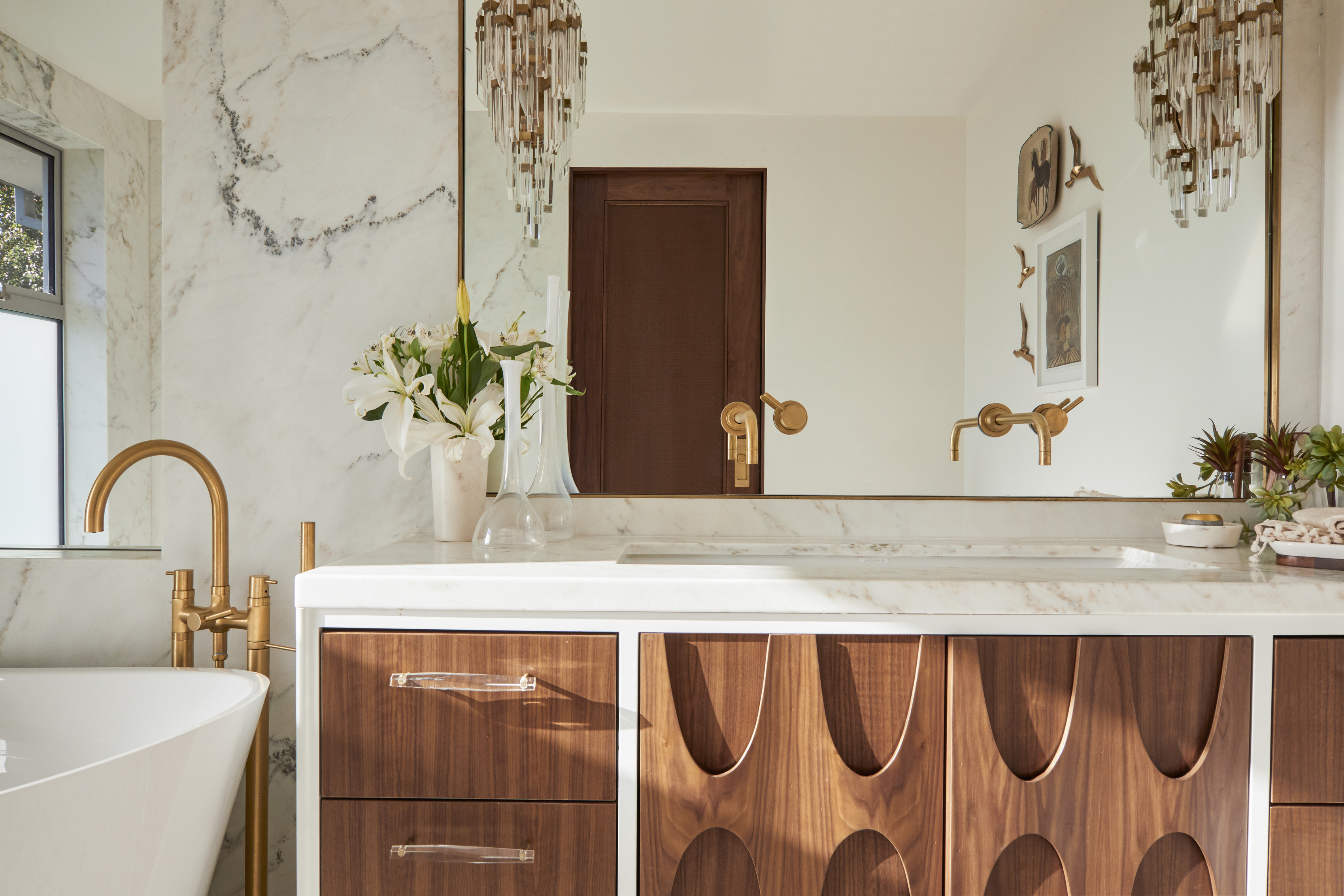
It's the little things that make a bathroom feel like a spa, and a touch of storage goes a long way. A modern bathroom is often a place that is reflective of our busy lifestyles, so regardless of how much space you have on offer, think about the layout and how to organize your bathroom and keep it decluttered. "If your bathroom is on the smaller side, it's essential to find fittings that are functional, modern and allow for free movement without feeling cramped," say Jen and Mar of Interior Fox. "Choose a basin, WC, shower, or bath that fit proportions."
"A vanity unit is the perfect addition and can provide ample storage for cosmetics, towels and even cleaning products,' say Jen and Mar. 'Position a mirror and occasional shelf above for ease for your soaps and creams."
23. Bring in raw industrial style with concrete finishes

We love the raw, textural look that concrete bathrooms showcase. Even just a single concrete covered wall is enough to set the tone and create an industrial-inspired theme – or you could use it to create a contrast to more polished bathroom furniture and fittings. The bateau bath and brass taps in this bathroom look striking against the plain concrete backdrop and soften the industrial feel of the material.
"For a raw industrial style, I like to bring in materials such as blackened steel with a patina or rustic, live-edge wood," says Victoria. "These material executions provide an unexpected take on more traditional materials such as metal or wood. I also like to bring in larger format tiles with a concrete look or even faux concrete waterproof plastering. We love to incorporate faux concrete for a built-in tub surround or on countertops and also like to add in exposed copper pipes or black iron fixtures. Exposed brick can also add a bold look – adding in a touch of an edgier look but in a more durable tile material."
24. Go for a graphic tile pattern in the shower area
New tile collections are featuring more graphic lines, which assemble together to form modern graphic or geometric patterns. Nailing just about every current bathroom trend from the pink hexagonal Lily Pad tiles to the black taps and Crittall-style shower screen, this is a truly modern shower room.
"Those with very small bathrooms will have to comprise on a bath and, instead, let the shower be the focal point of the room," says Juan. "A walk-in shower is the best solution for small spaces. They blend function and style and, importantly, don't require much space to stand out. To give your walk-in the contemporary touch, opt for exposed shower fittings with a more modern finish, such as brushed brass, stainless steel, or matt black."
25. Incorporate fluted furniture

Fluted and textured furniture has been cropping up in new furniture collections and in modern bathroom designs. It gives a space movement and dynamism, plus adds a layer of warmth. Now it's stepping into bathrooms too. Add a lovely subtle texture and interest, it's the perfect contrast to sleek marble wall tiles.
"Fluted furniture has become a sensation in bathrooms because of its ability to add a touch of sophistication and timeless elegance to the space," says Victoria. "It’s a way to add depth and visual interest to otherwise flat cabinet doors. Or walls! We love to add a fluted veneer to powder bathroom walls for a dramatic statement."
26. Brave a darker scheme
A smokey black bathroom color idea can feel very grown-up, especially when combined with very sophisticated fixtures and a gloss paint that makes the room shine.
Interestingly, if you have an oversized bathroom and want to give it a more cozy, intimate feel, go for warmer color paints. These will create the feeling of contraction (which is a good thing), bringing the walls in. An enveloping feeling will thus be created, giving you a snug, cocooning vibe.
"We used black paint for an entirely monochrome setting in the washroom of one of our projects, which has a semi-shiny satin finish," says Enis Karavil, creative director at SANAYI313. The washroom is imagined as a black box, and finished with a black shell with silver wall sconces and accessories. "With the angular form of the ceiling which tricks the eye into thinking it's higher than it actually is, this monochromatic scheme has made the narrow space appear larger."
27. Add plants
A seriously cool way to bring the outdoors in is by adding plants to the space. We're in love with this super relaxing bathroom, all made in wood with a tall tree by the bathtub.
Consider bringing in best houseplants for bathrooms if trees isn't an easy addition. "Each houseplant has very specific needs in terms of light levels, watering, humidity, feeding, and temperature so it’s important to find out what type of plant you have and its country of origin to get a sense of the conditions it will thrive in," says Emma O’Neill, head gardener at Garden Organic. "Make sure you have the right plant in the right place."
28. Hang a modern chandelier for a luxurious touch
Statement bathroom chandelier not only illuminates a room but also lifts the mood of a bathroom. "Chandeliers are an increasingly popular choice in bathrooms as they help to ease the transition between bedrooms and soften the harder and more linear finishes and fixtures in bathroom spaces," says Clara Ewart, senior designer at Kitesgrove. From long, cascading designs to thin, petite forms, choose a shape that is ideal for the scale of the room.
Also, before picking up a design of your choice, remember to check the Ingress protection (IP) rating, especially if you're hanging the light over the tub. Also, check with the manufacturers about moisture, and consider weight, as some chandeliers can be heavy and will need extra mounting.
29. Create a walk-in shower room
Walk in showers add such a luxurious feel to a bathroom, and despite being associated with large, elegant bathrooms (just like the one above) they can actually work in smaller bathrooms too as you don't have to break up the space with bulky shower enclosures, so the space feels open and airy.
"For shower tiles, it's ideal to add horizontal ones that make the space appear larger," says Julia Mack, founder of Julia Mack Design. "Plus, it hides all the grout joints of a smaller, more standard tile. I like Porcelanosa tiles for their tonal textures. In terms of color, I always select a more tonal neutral because this is an integral part of the interior."
This walk-in shower enclosure is framed in white marble. A subtle step-down in the marble floor keeps the rest of the bathroom dry, while alcoves in the marble wall create a space for toiletries.
30. Install a Crittall style shower screen
For a simple, achievable look for modern bathroom designs, switch out your current shower enclosure for a Crittall-style door and windows. Trends in shower screens have moved on from the pared-back, can-barely-see-it’s-there look. Outlining is one way to breathe new life into bathroom minimalism, with their elegant clean profiles.
"Crittall style windows and doors add geometry to your bathroom and are right at home in both tradition and contemporary home design projects," says Julia. "If you are looking for a light and airy glass shower screen or partition wall in your bathroom, consider this slimline black frame then repeat it again in other locations; closets and mirrors are a perfect choice to tie your space together. This style is also a great way to partition off a larger space by creating a glass visual divider without losing any volume or incoming natural light."
31. Arrange tiles in chevron formation
Not only are chevron tiles perfect for modern bathroom designs, adding texture to a minimalist scheme or in as shower tiles, but the pattern is ideal for smaller spaces as this bathroom proves.
Rectangular bathroom tiles are arranged in a modern chevron formation, creating a striking focal point in this black-and-white bathroom. The shape and formation create an illusion of expanded space, as though the narrow shower area isn't as compact. Black radiators complement the color scheme.
"A chevron floor tile pattern ideally works in two ways for a bathroom floor; one, the amount of grout between tiles provides a non-slip aspect which is helpful in wet areas, and two, the pattern will immediately add textural interest to the space," says Julia. "Rooted in medieval times, a well-proportioned chevron in either ceramic, porcelain, or marble tile will add a sophisticated subtlety to the design and pairs beautifully with both contemporary and more traditional cabinetry. Think of a chevron and its sibling, herringbone, when a bathroom requires an elegant upgrade from the standard square tile. Just be certain that the pattern proportions fit correctly to maximize the elegant impact."
32. Go for a built-in shower seat
For a luxe look, create a built-in bench in on your shower wall using the same material as the rest of the walls and floors. The green marble basin continues through the glass shower partition in this modern bathroom to become the seating in the shower.
"Who wouldn’t like to add a bit of a spa treatment to their standard shower experience?" says Julia. "Consider adding a built-in shower seat constructed of your same wall tile, soft slate, or marble top are all particularly nice. If your space is tight, add it in a triangular shape, floating in a corner or, if there is lots of space, add it on-center withana integral shampoo niche shelving above. Ease of use and quick cleanup are a priority, it is an asset to any shower experience."
If a built-in design isn't for you, consider adding a stool or a chair, or even a foldable seater that matches the design or color scheme of the bathroom. In smaller showers, to save space, a flexible seating piece would do better.
33. Introduce brass bathroom fittings
Adding brass bathroom fittings can really help to warm up any bathroom palette, be it white, brown or grey bathroom color scheme.
"Clients really want a sleek and minimalist style for their faucetry to add to the other design showstoppers in their bathrooms," says Victoria. "And faucets in brass look beautiful adorning stone or tile on the wall."
With statement lights, bright wallpapers, a shower stool, tall plants, large vanities, and patterned floor tiles and blinds, you could give a regular, ordinary bathroom a fresh look.
What should be part of modern bathroom design ideas?
Ideally, a modern bathroom should contain all the amenities and design elements that make the dweller feel relaxed, at ease, and comfortable. The space should have a sizable sink, a shower with a glass partition, a statement lighting piece, and window blinds. If you want to give the space a more modern appeal, consider adding wallpaper and artwork.
What is a modern color for a bathroom?
The days of all-white or light-toned bathrooms are slowly coming to an end. With homeowners becoming more and more confident with bolder hues, the trend is shifting towards colors such as jewel tones or moody shades like charcoal, purple, pewter green, or even black.
What are some modern bathroom ideas for a dated space?
To transform your dated-looking space, upgrade the hardware to a more modern design. Choose brass knobs and handles on the storage, and swap out a square or round mirror for a more irregular-shaped one. Add more expensive toiletries, and place a tall plant in the room. If you have the budget, consider adding a wallpaper or painting an accent wall to give the room a crisp look.

Aditi Sharma Maheshwari started her career at The Address (The Times of India), a tabloid on interiors and art. She wrote profiles of Indian artists, designers, and architects, and covered inspiring houses and commercial properties. After four years, she moved to ELLE DECOR as a senior features writer, where she contributed to the magazine and website, and also worked alongside the events team on India Design ID — the brand’s 10-day, annual design show. She wrote across topics: from designer interviews, and house tours, to new product launches, shopping pages, and reviews. After three years, she was hired as the senior editor at Houzz. The website content focused on practical advice on decorating the home and making design feel more approachable. She created fresh series on budget buys, design hacks, and DIYs, all backed with expert advice. Equipped with sizable knowledge of the industry and with a good network, she moved to Architectural Digest (Conde Nast) as the digital editor. The publication's focus was on high-end design, and her content highlighted A-listers, starchitects, and high-concept products, all customized for an audience that loves and invests in luxury. After a two-year stint, she moved to the UK and was hired at Livingetc as a design editor. She now freelances for a variety of interiors publications.
